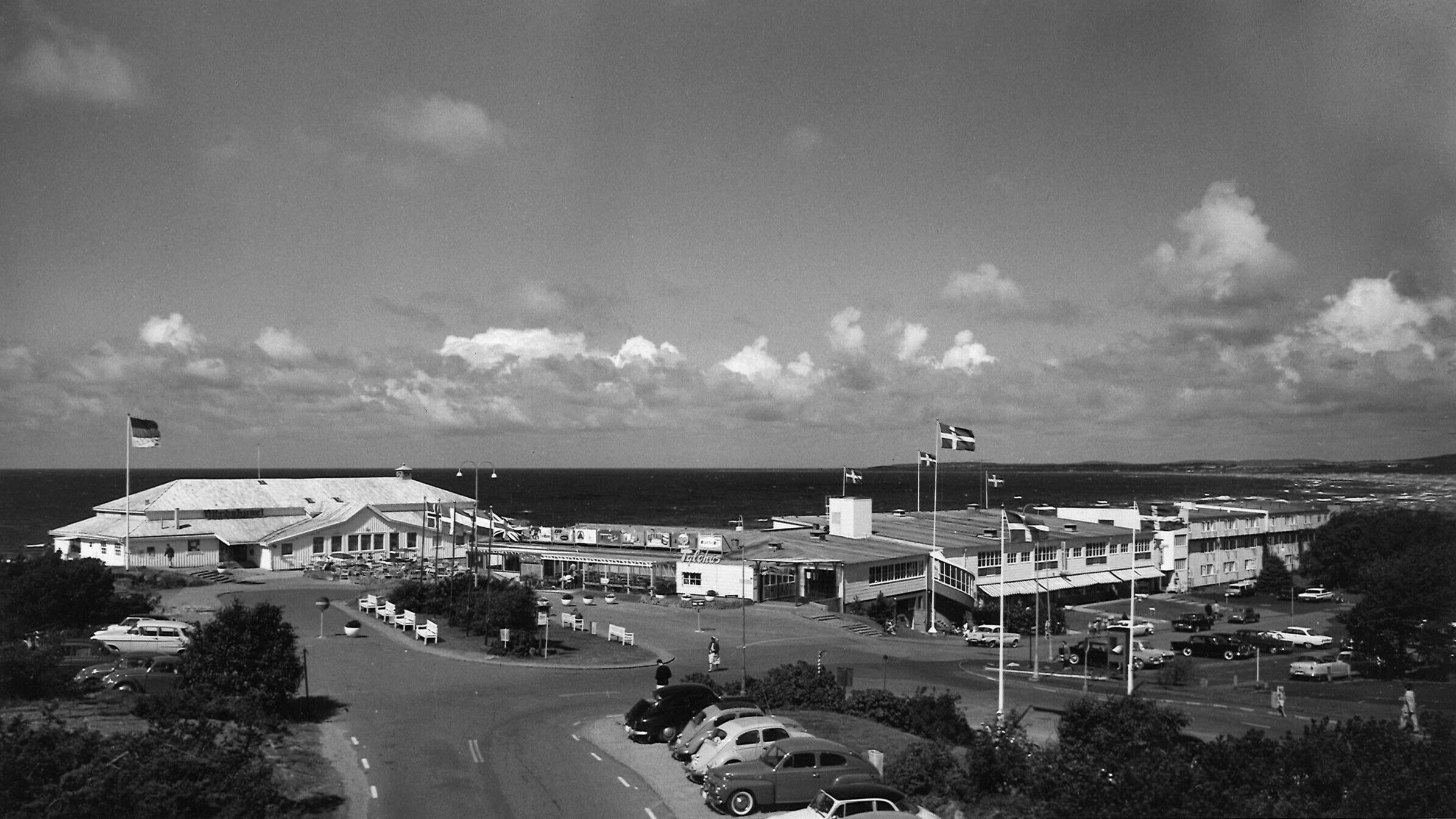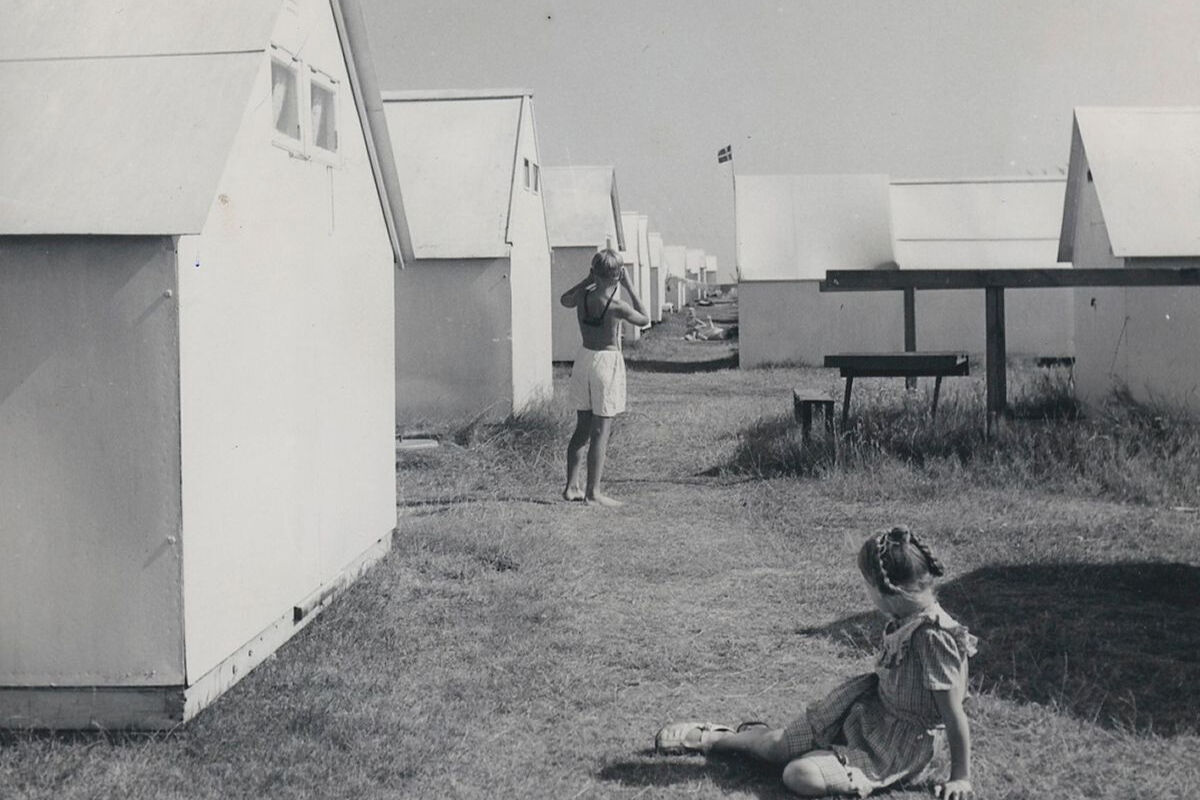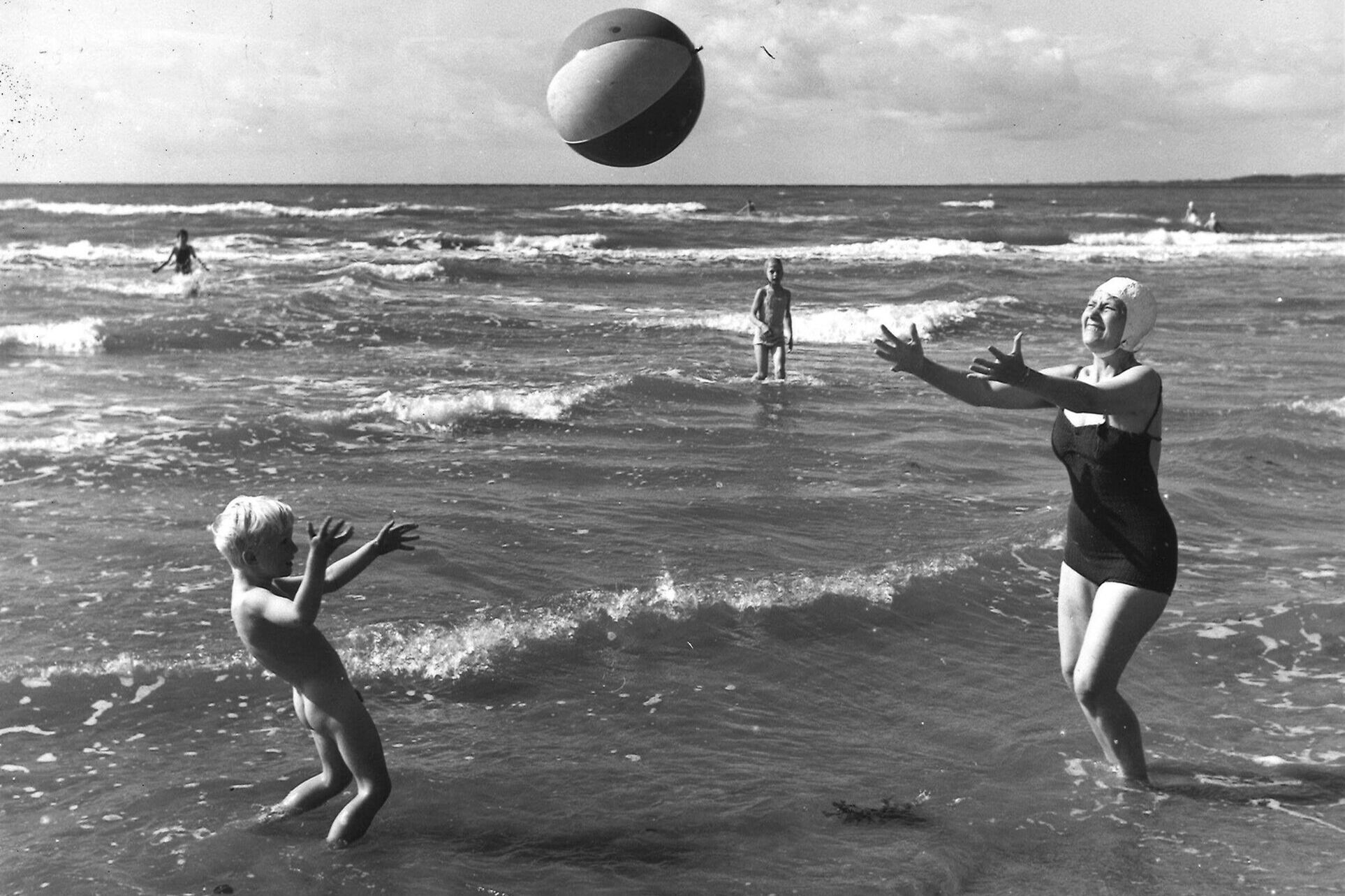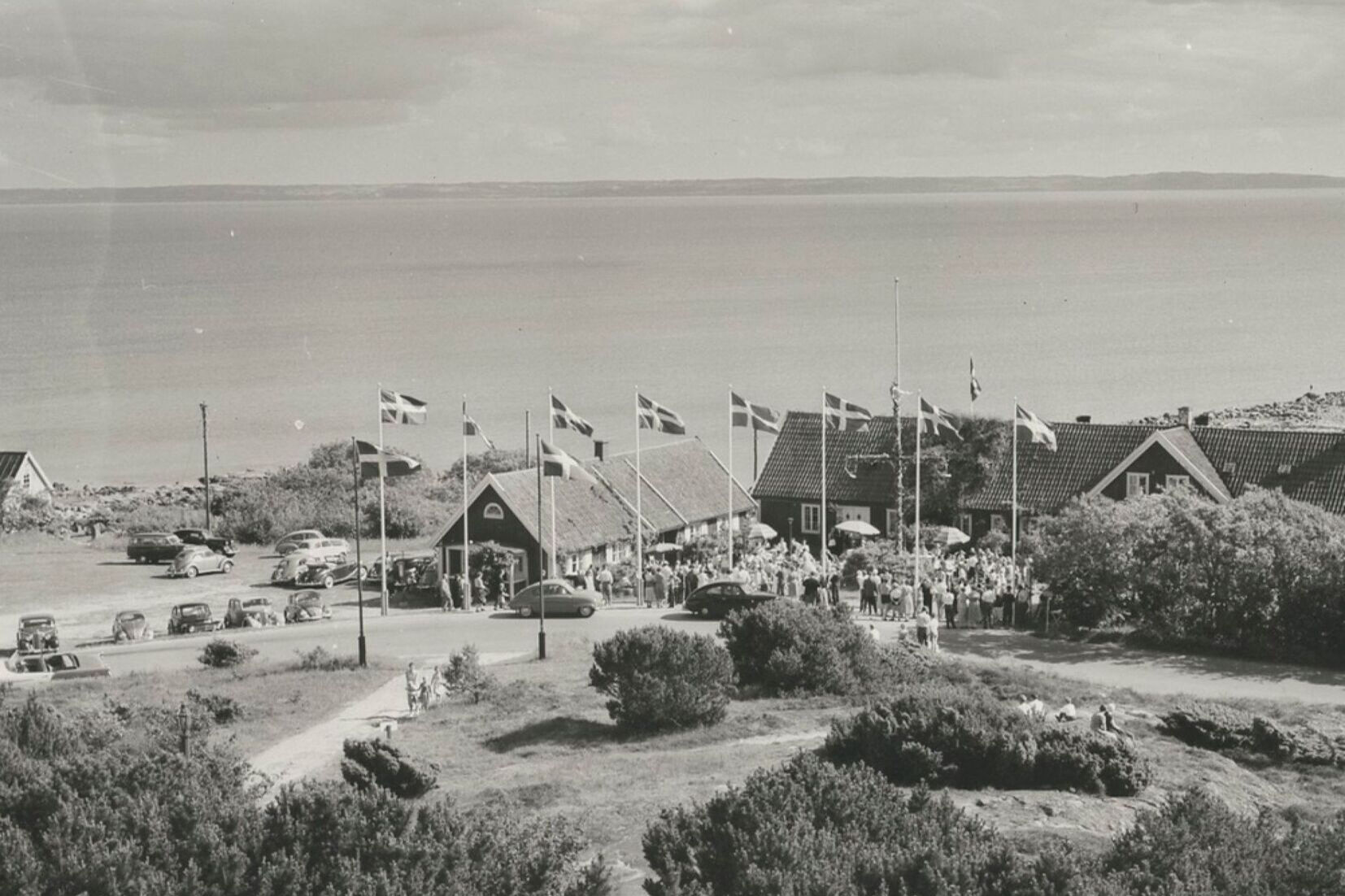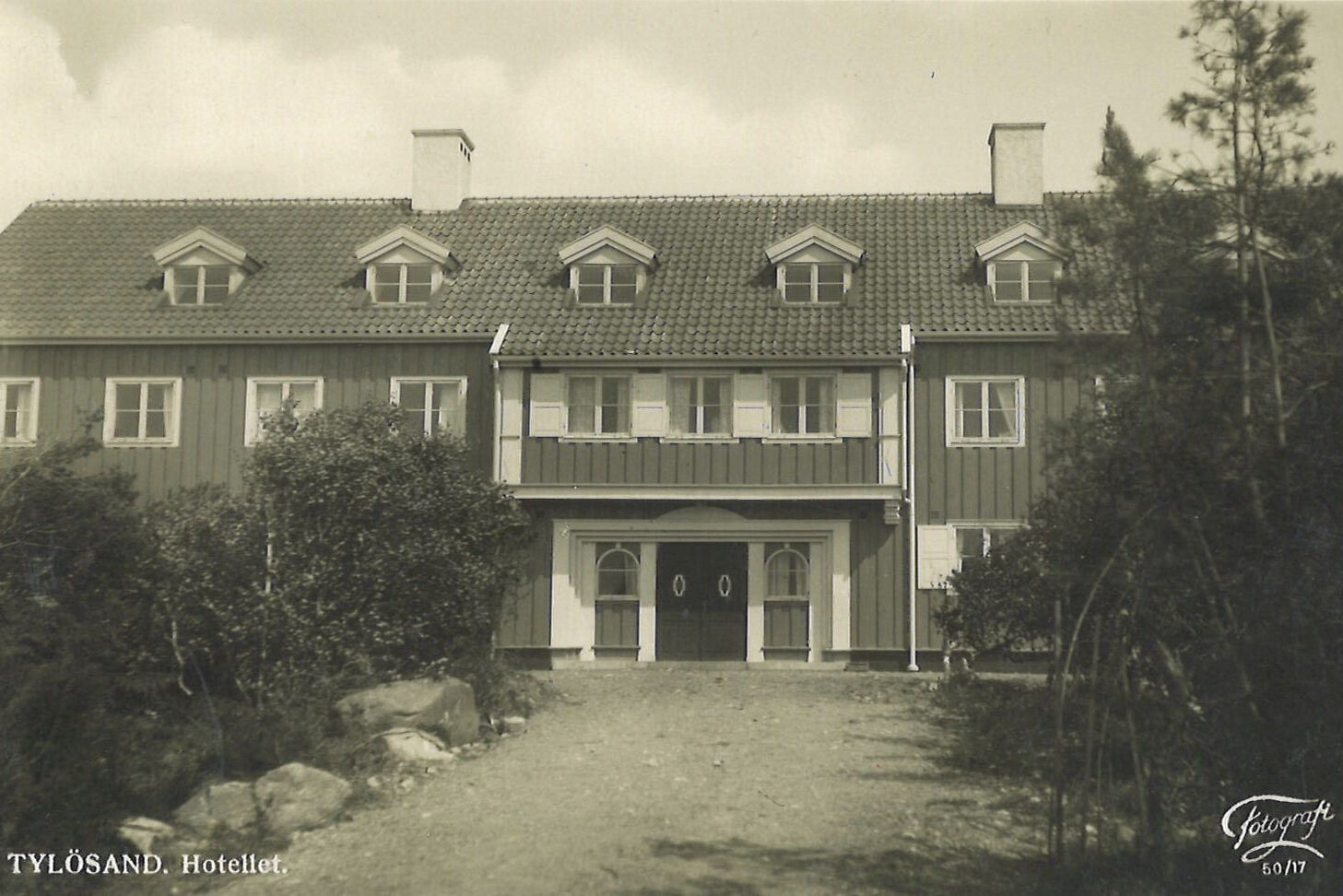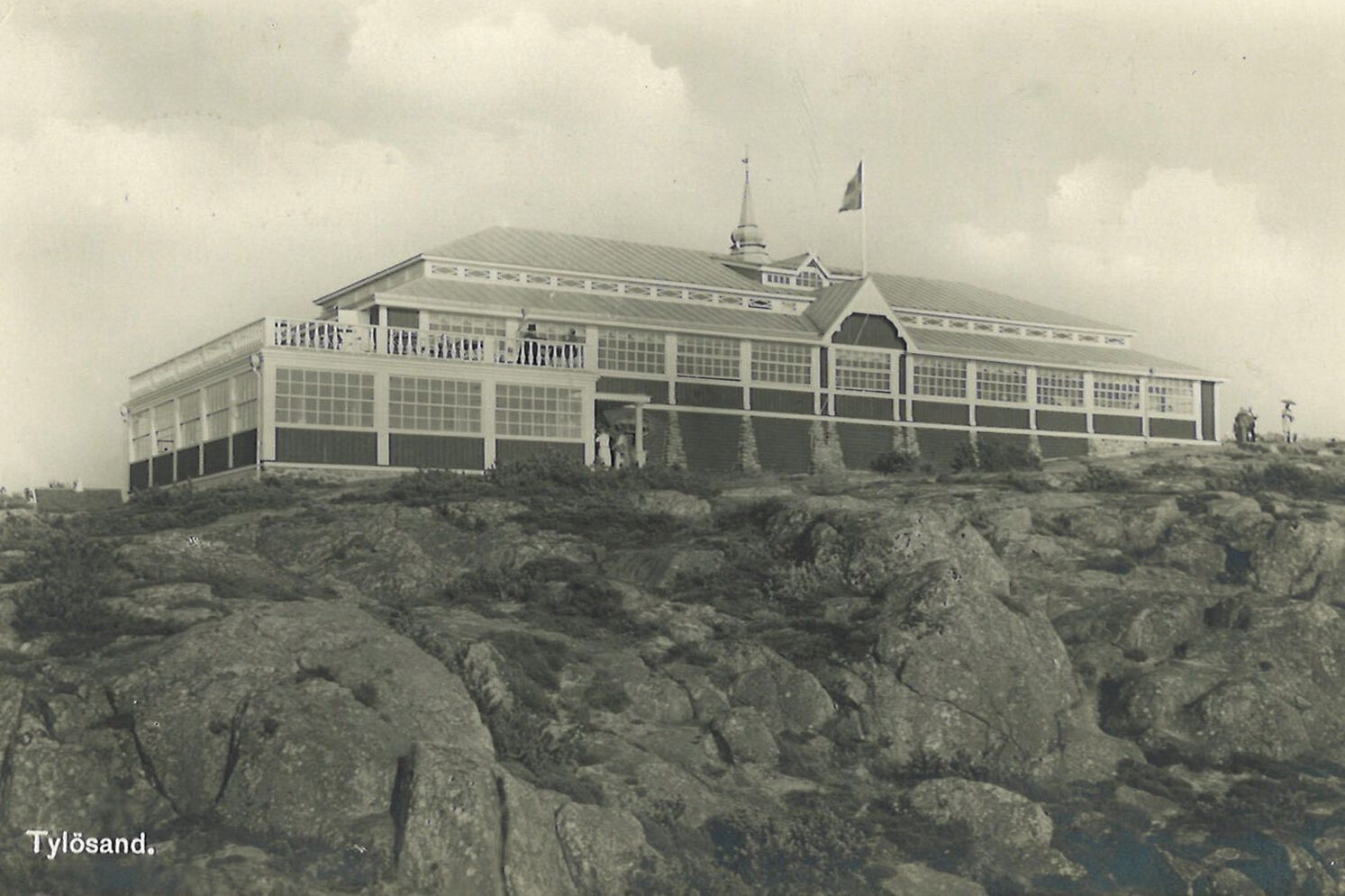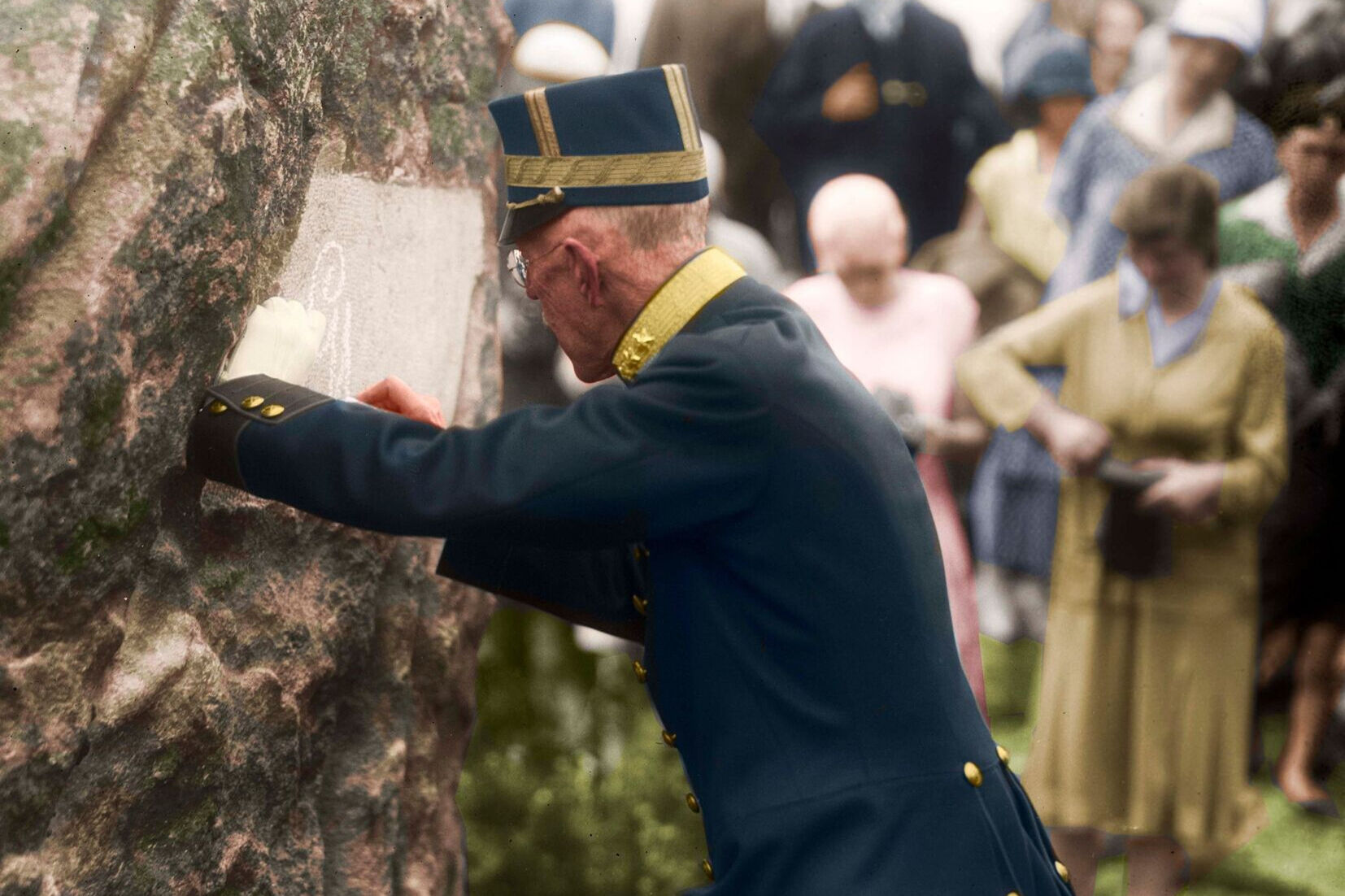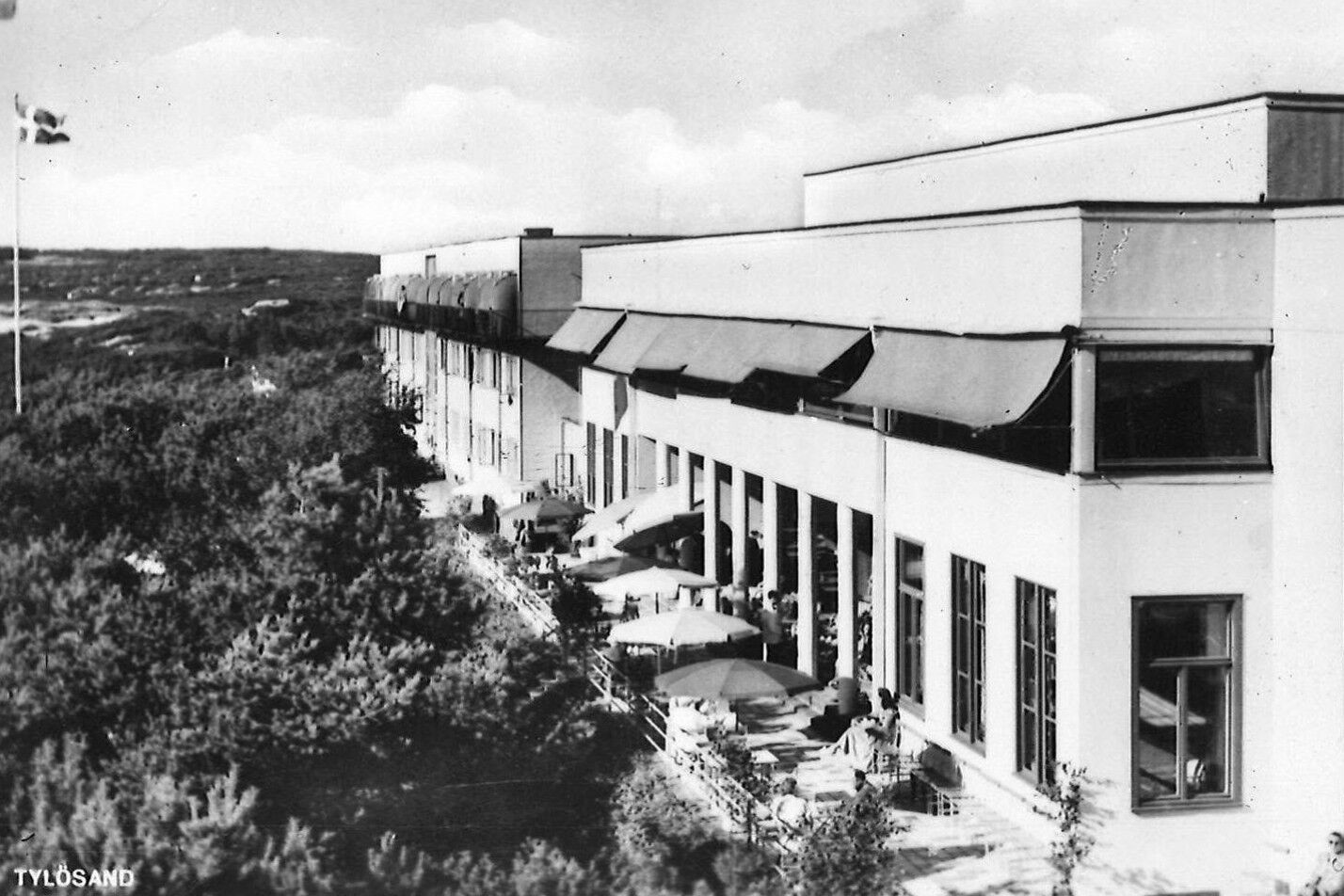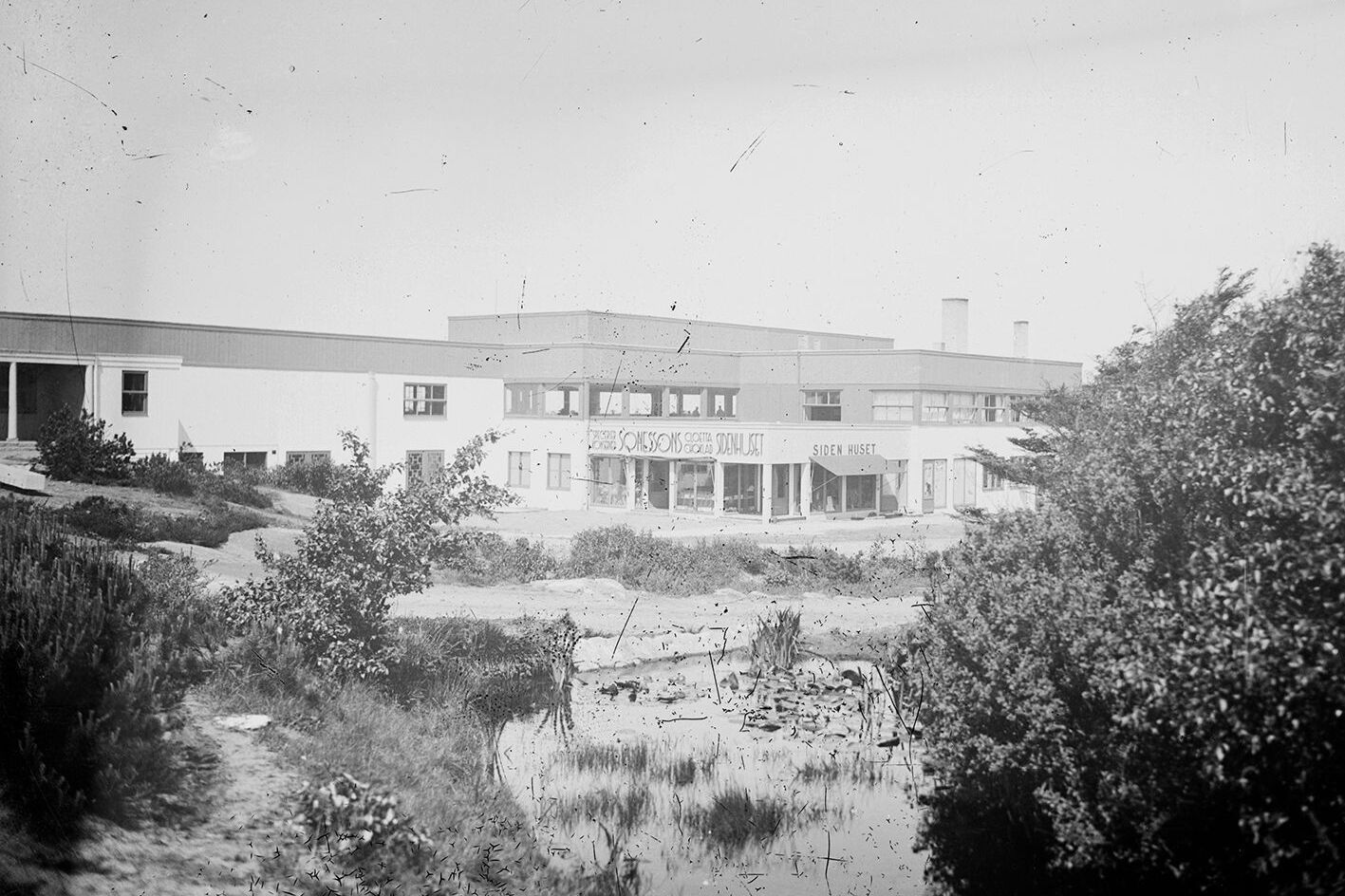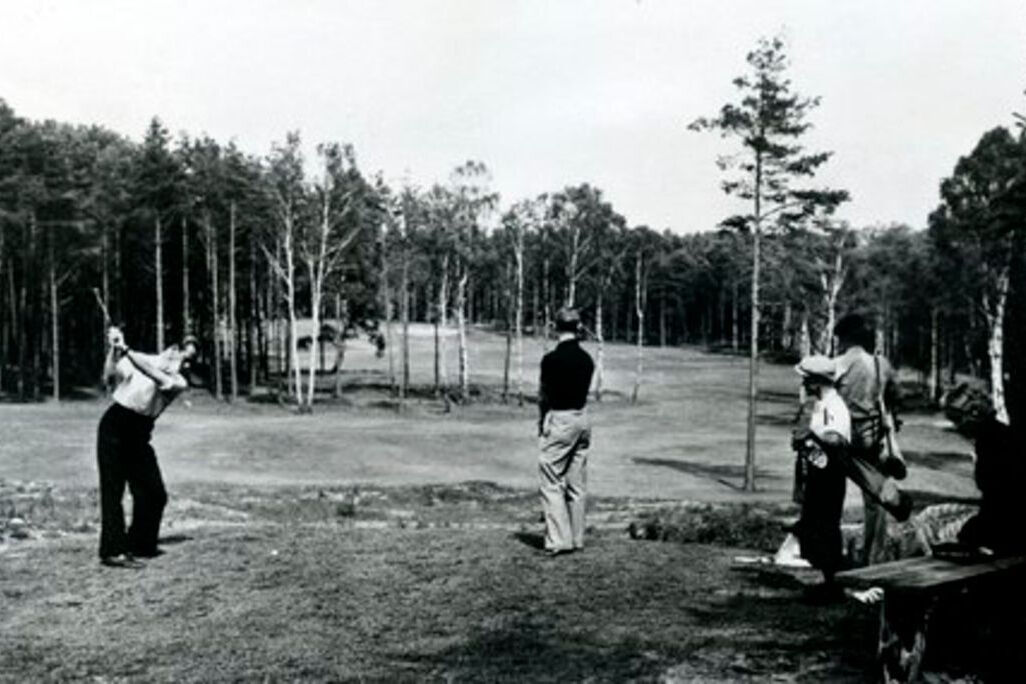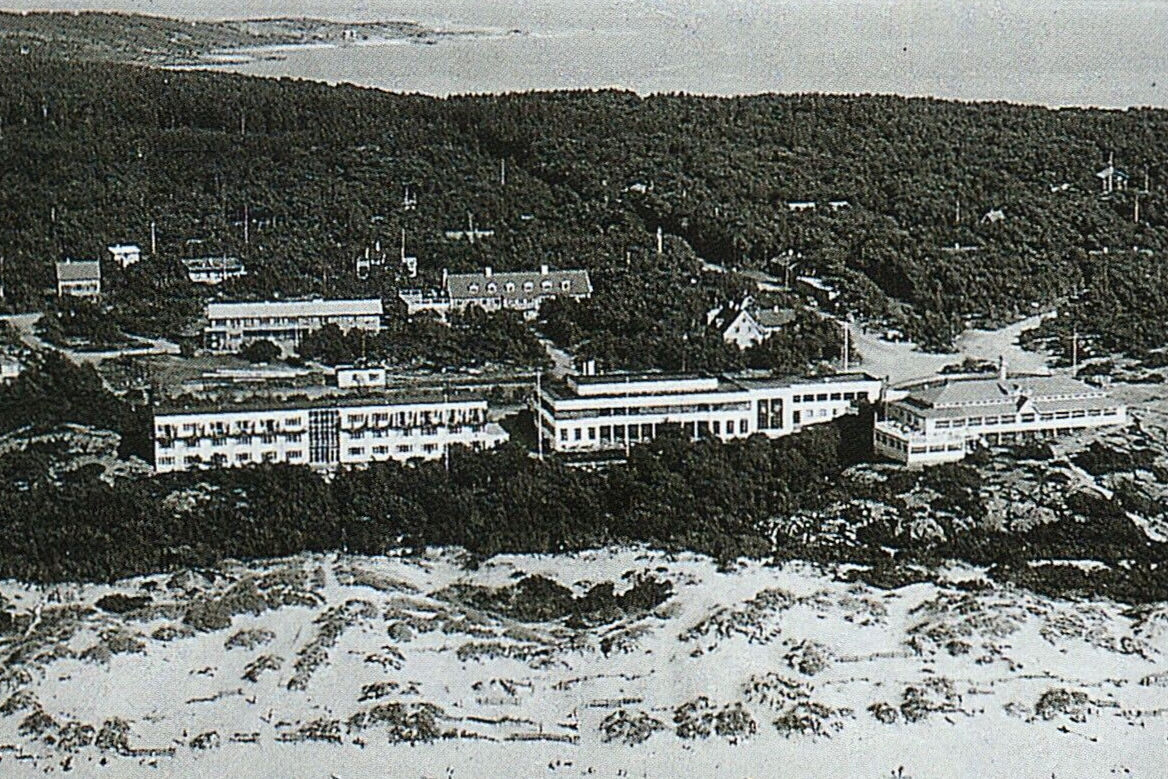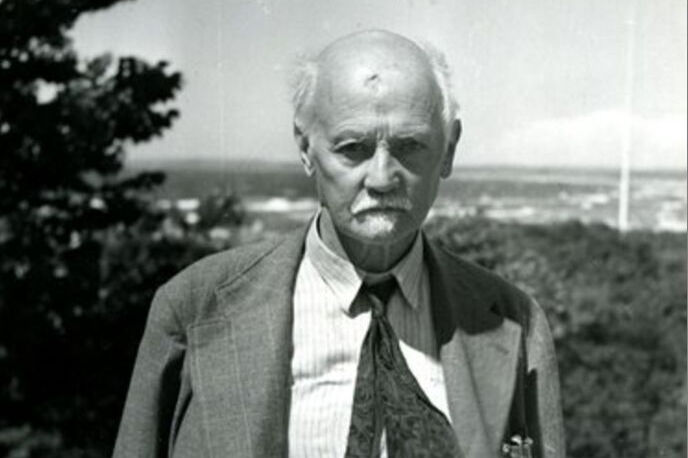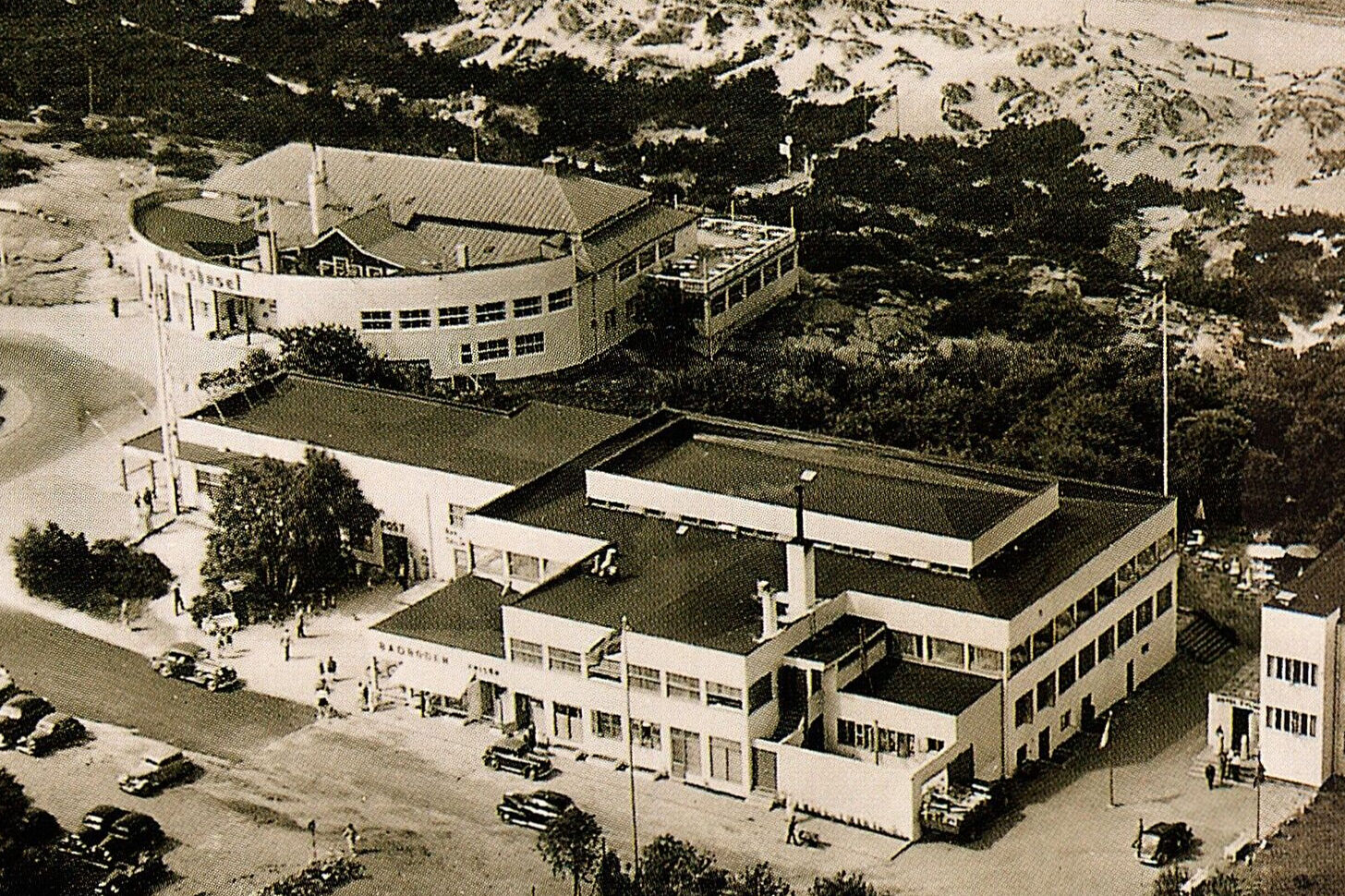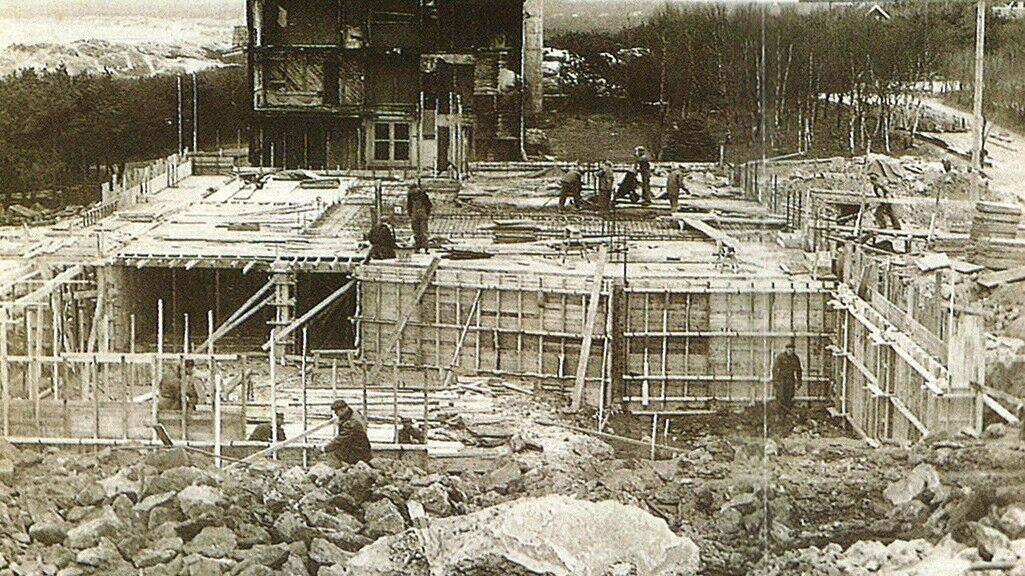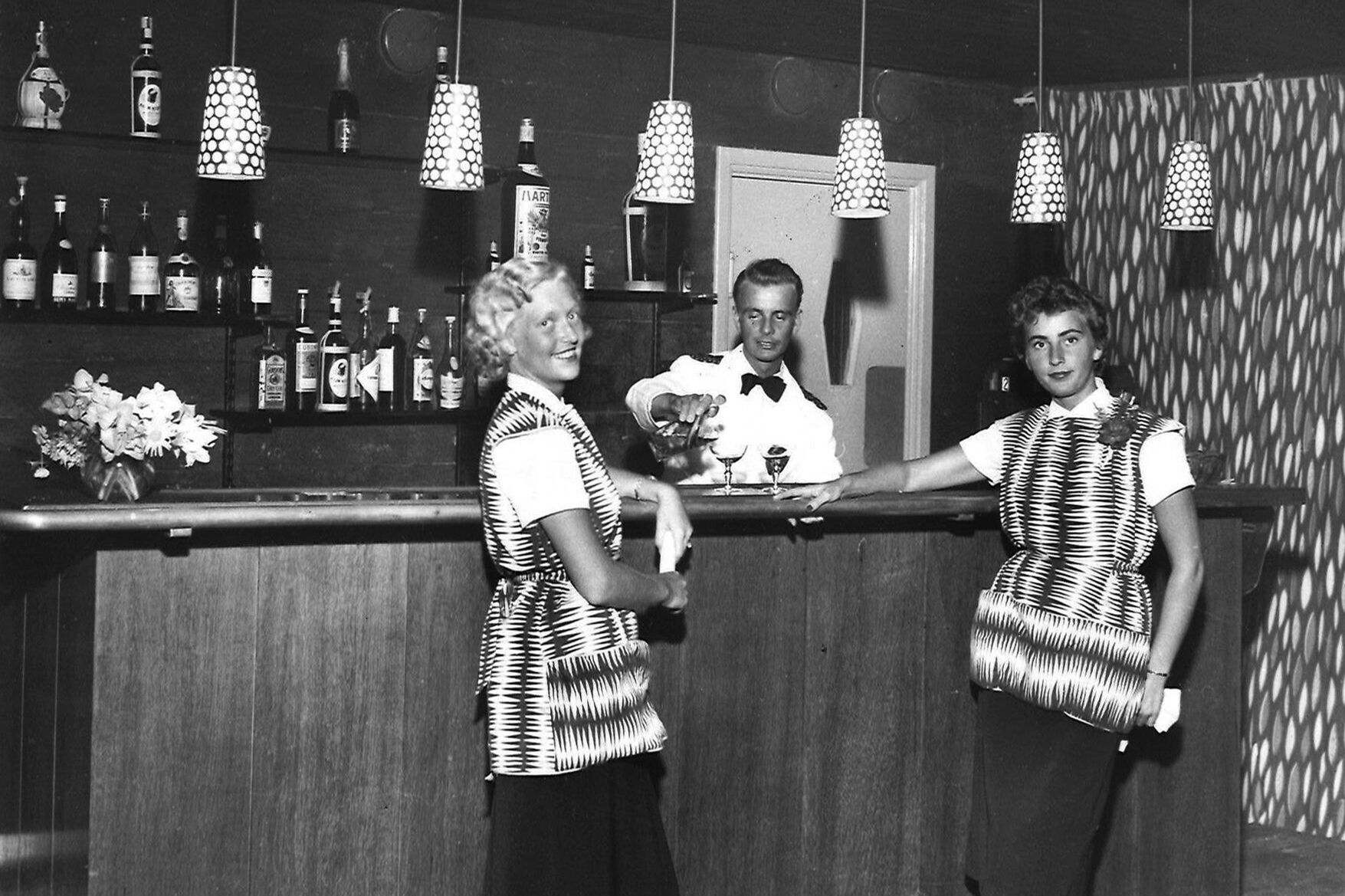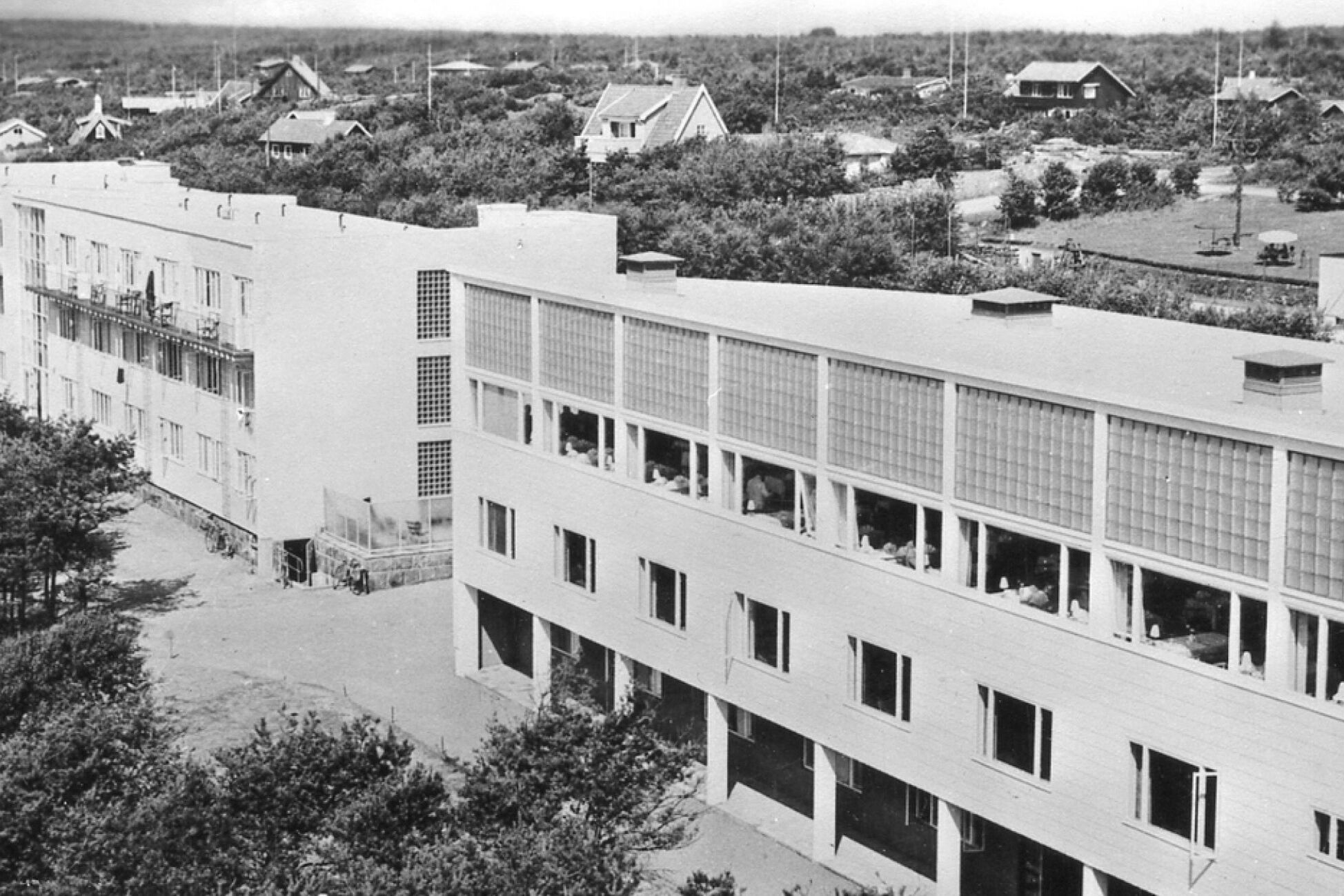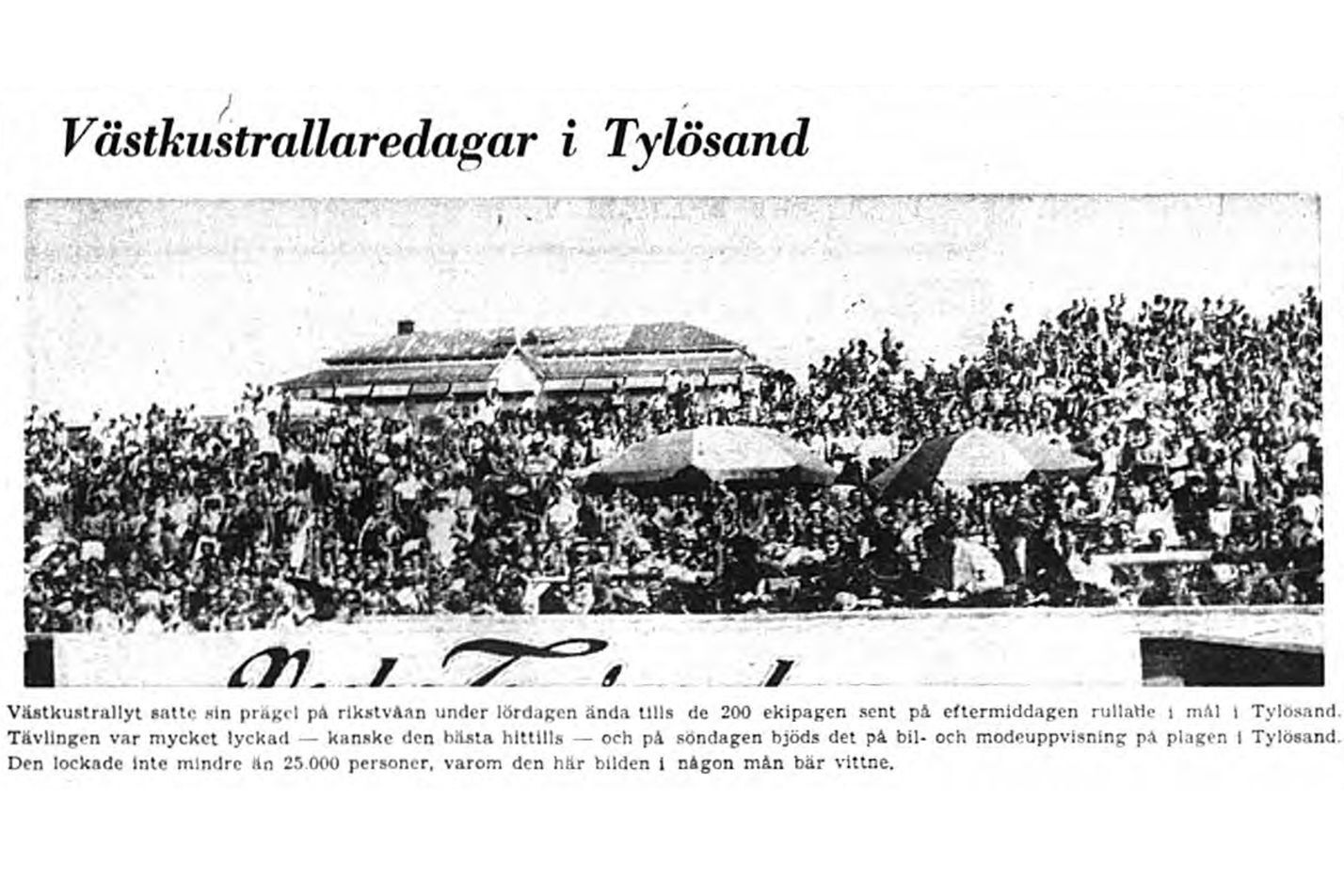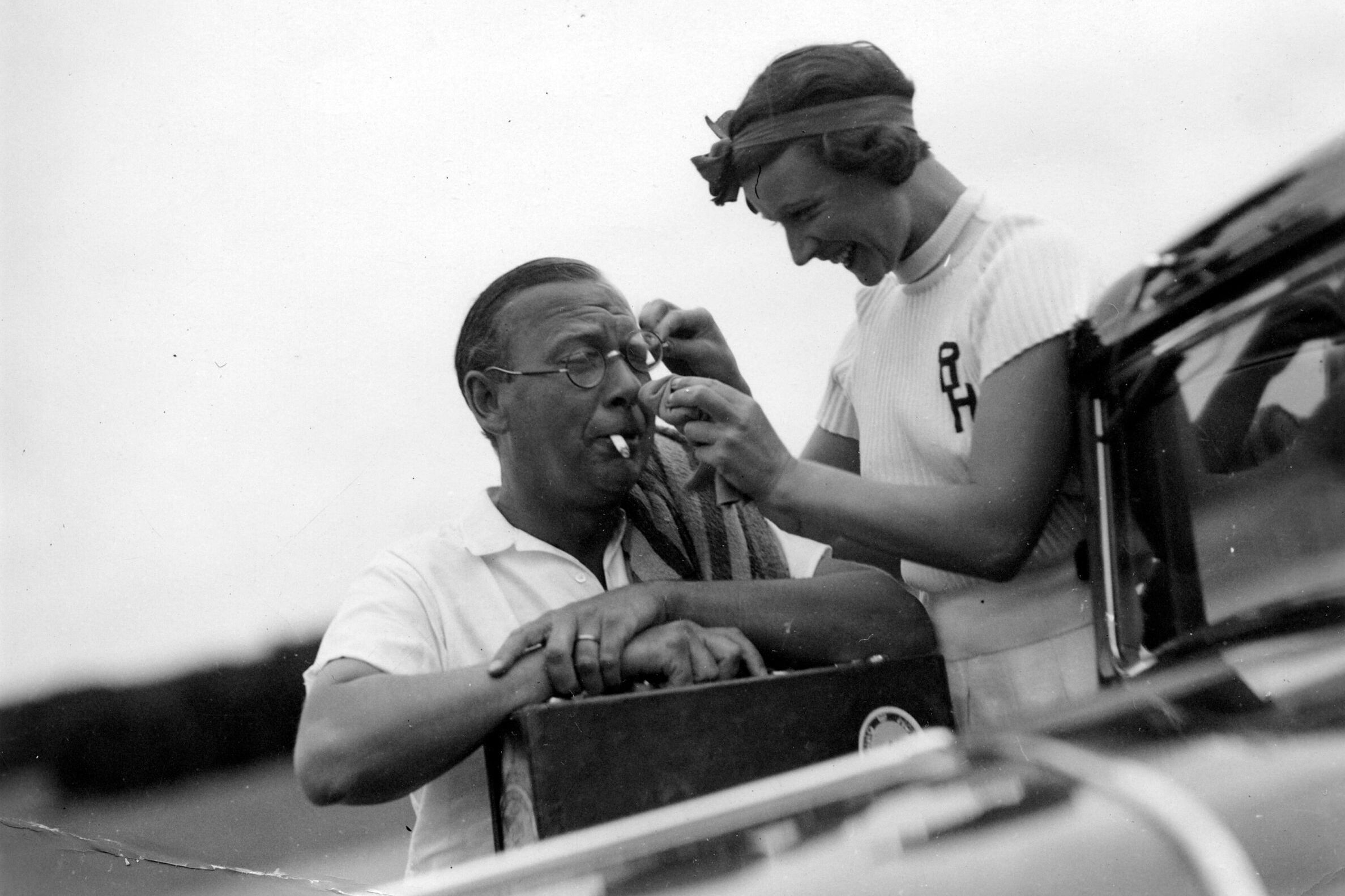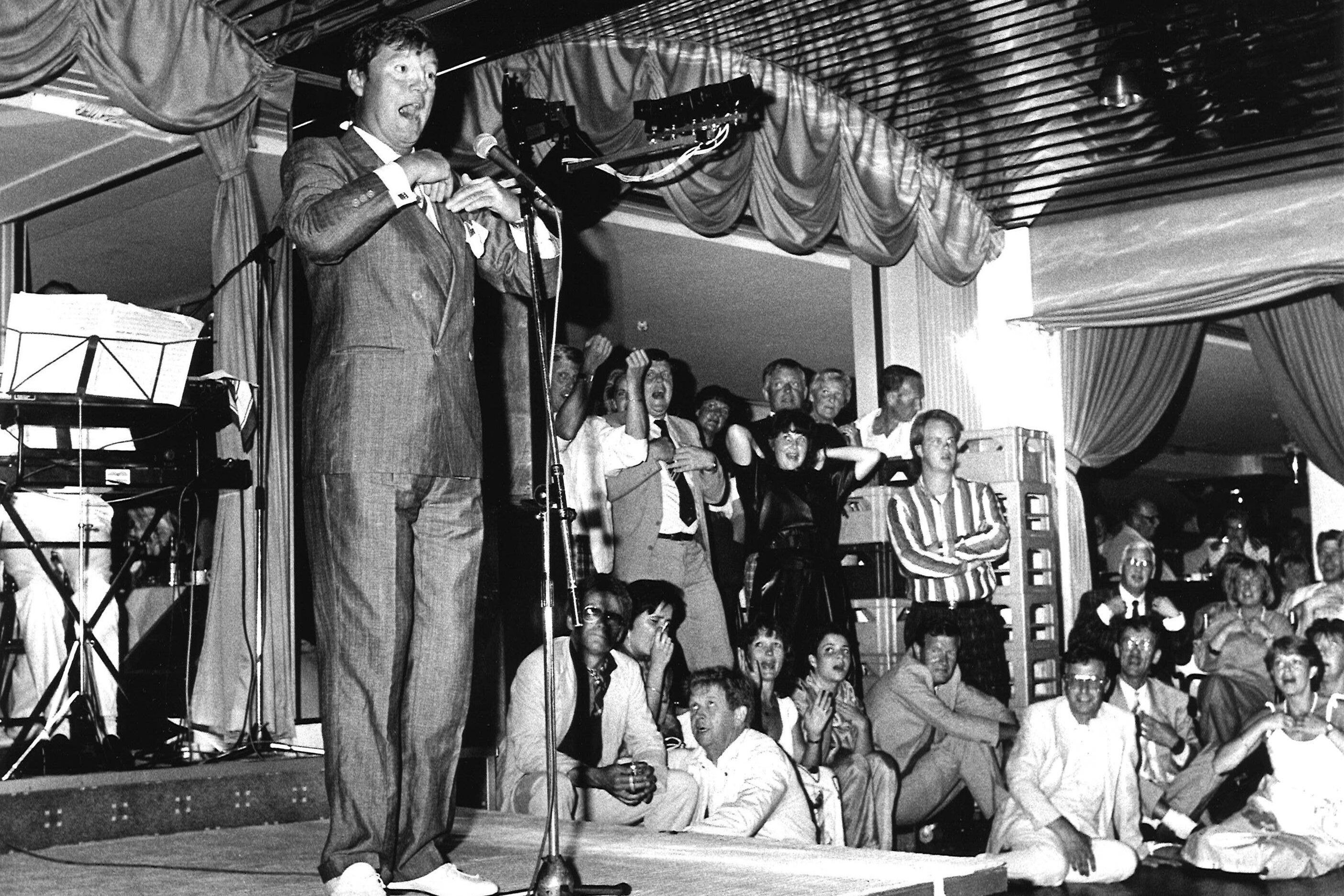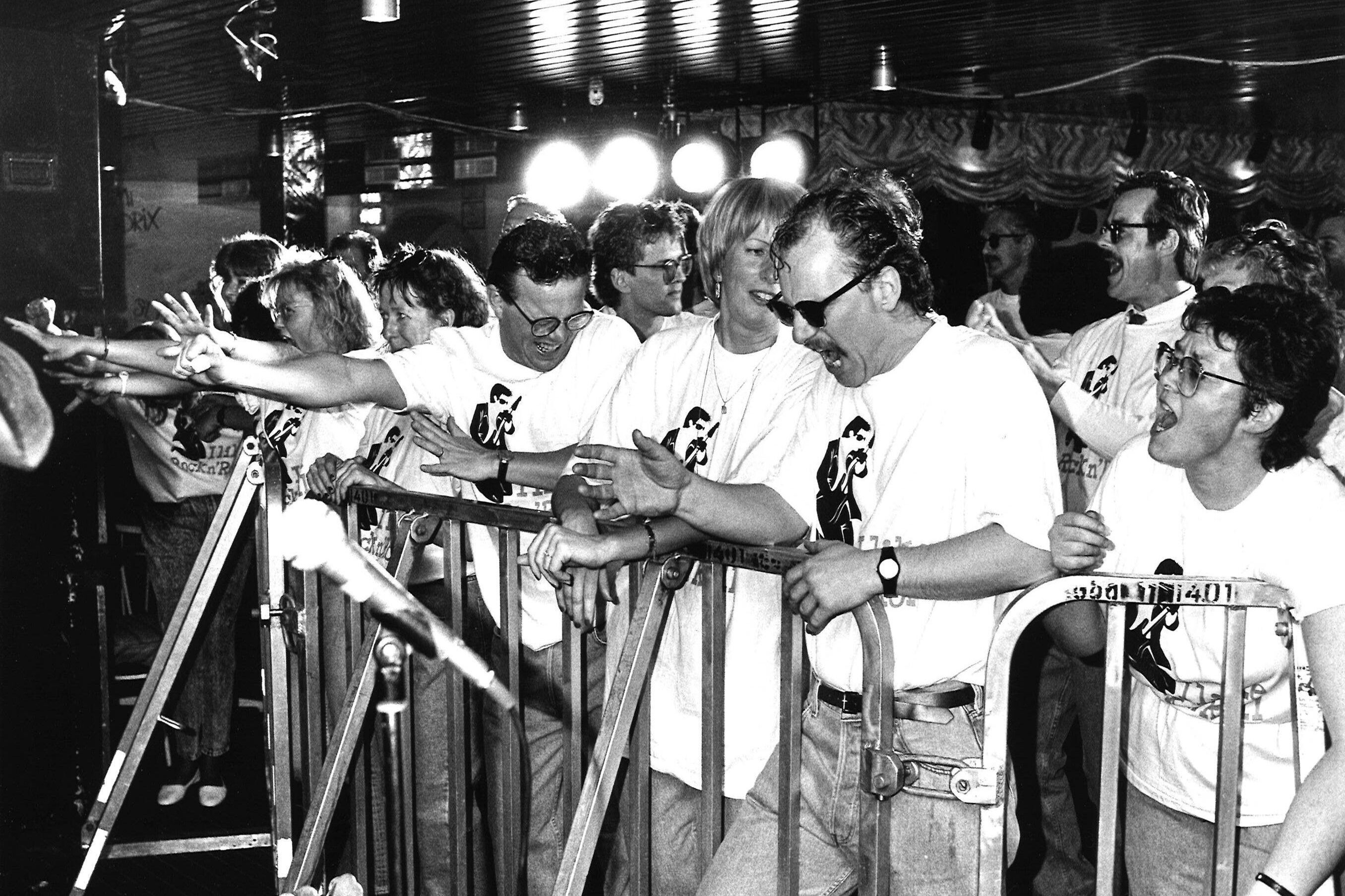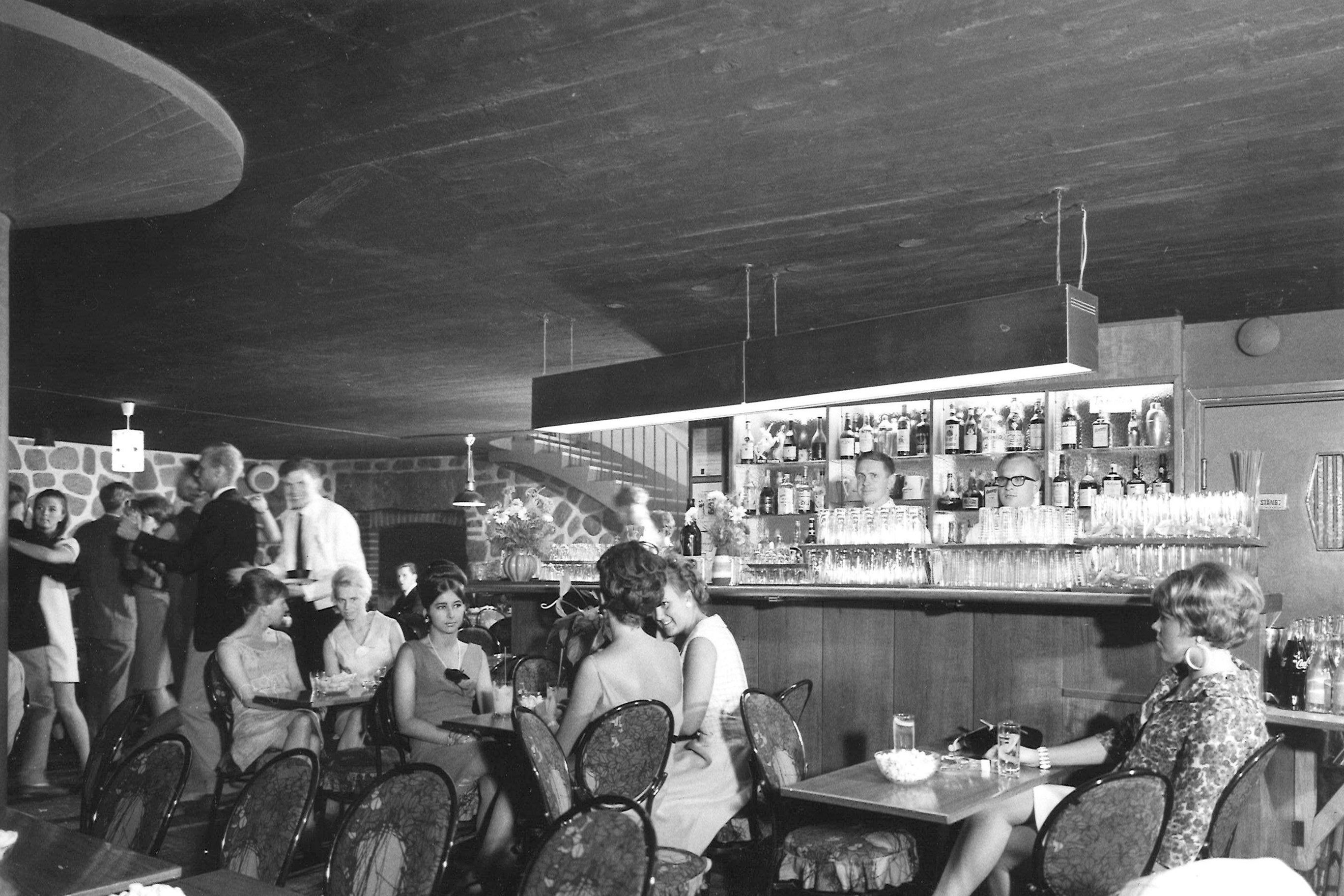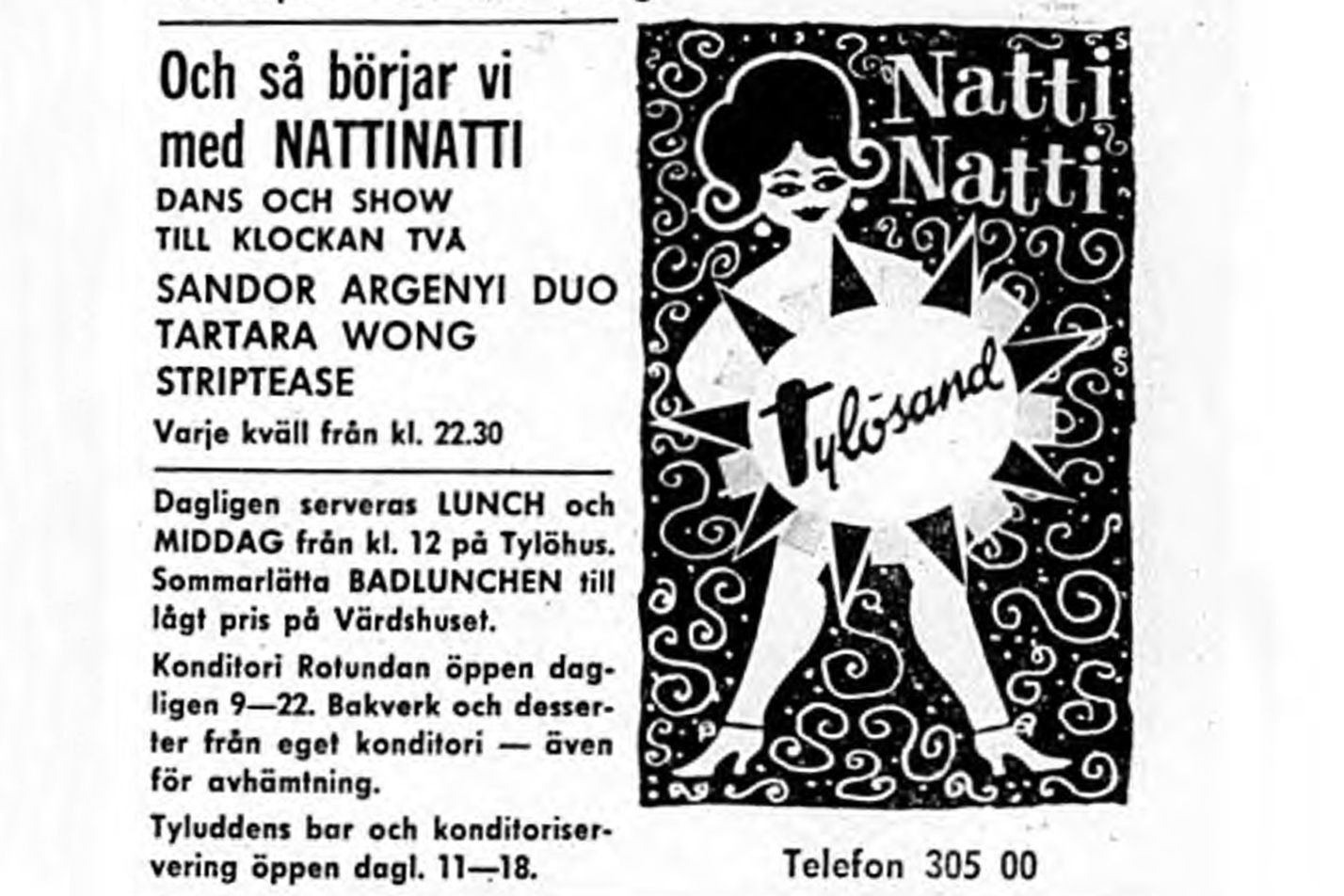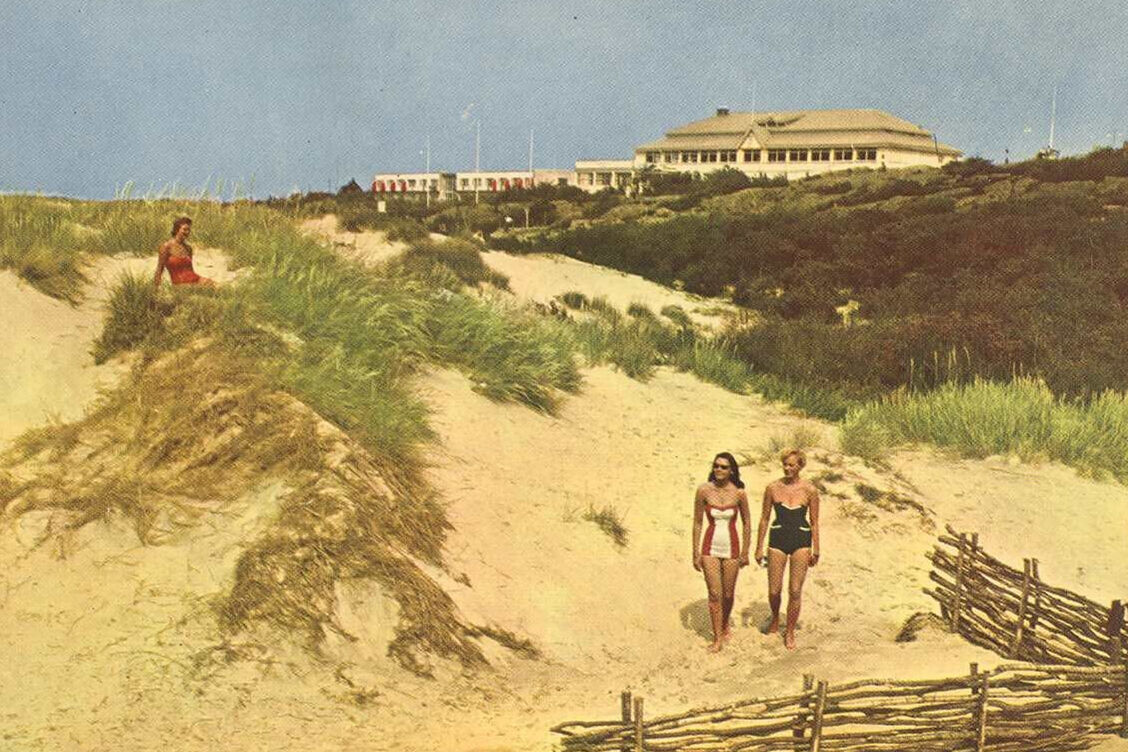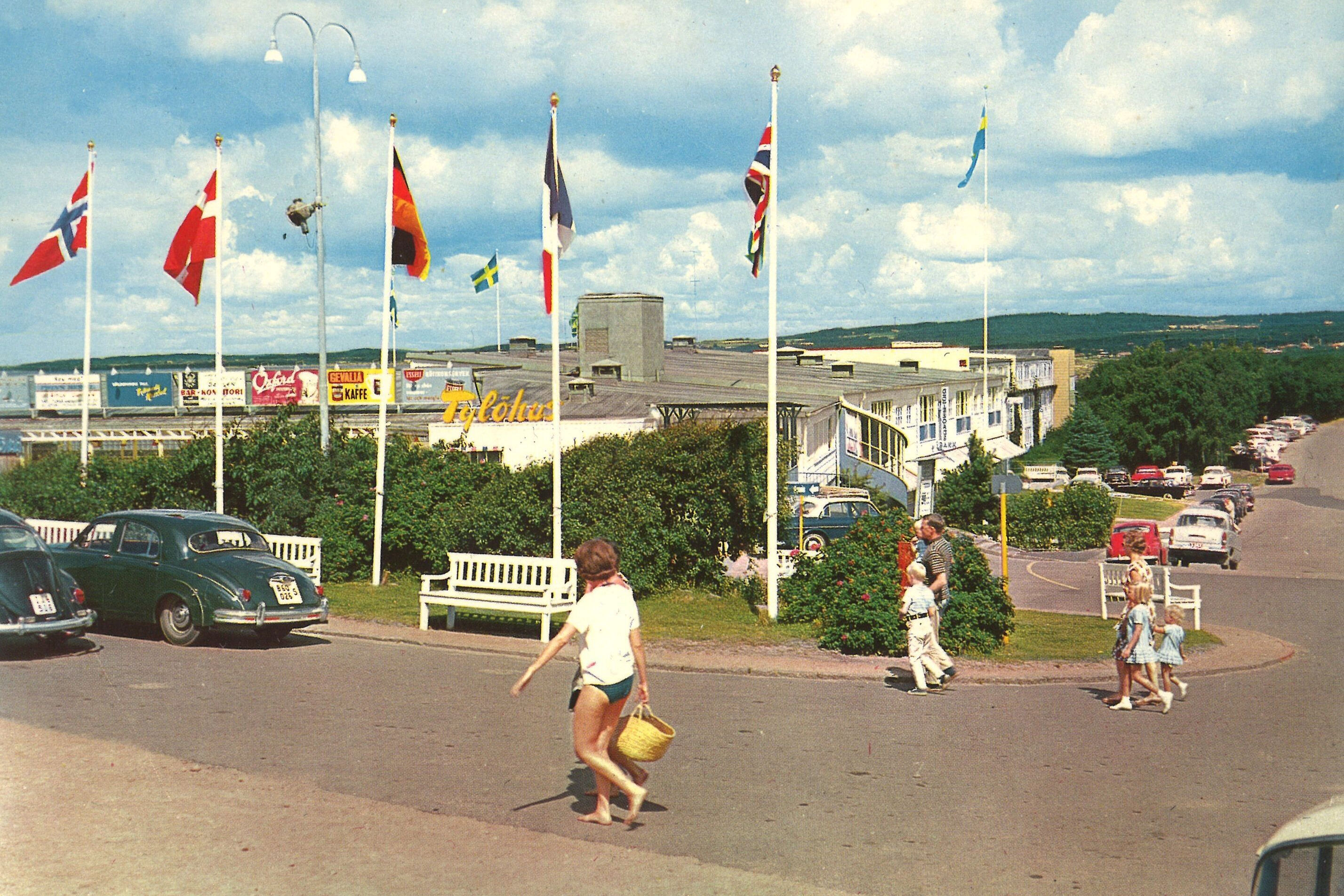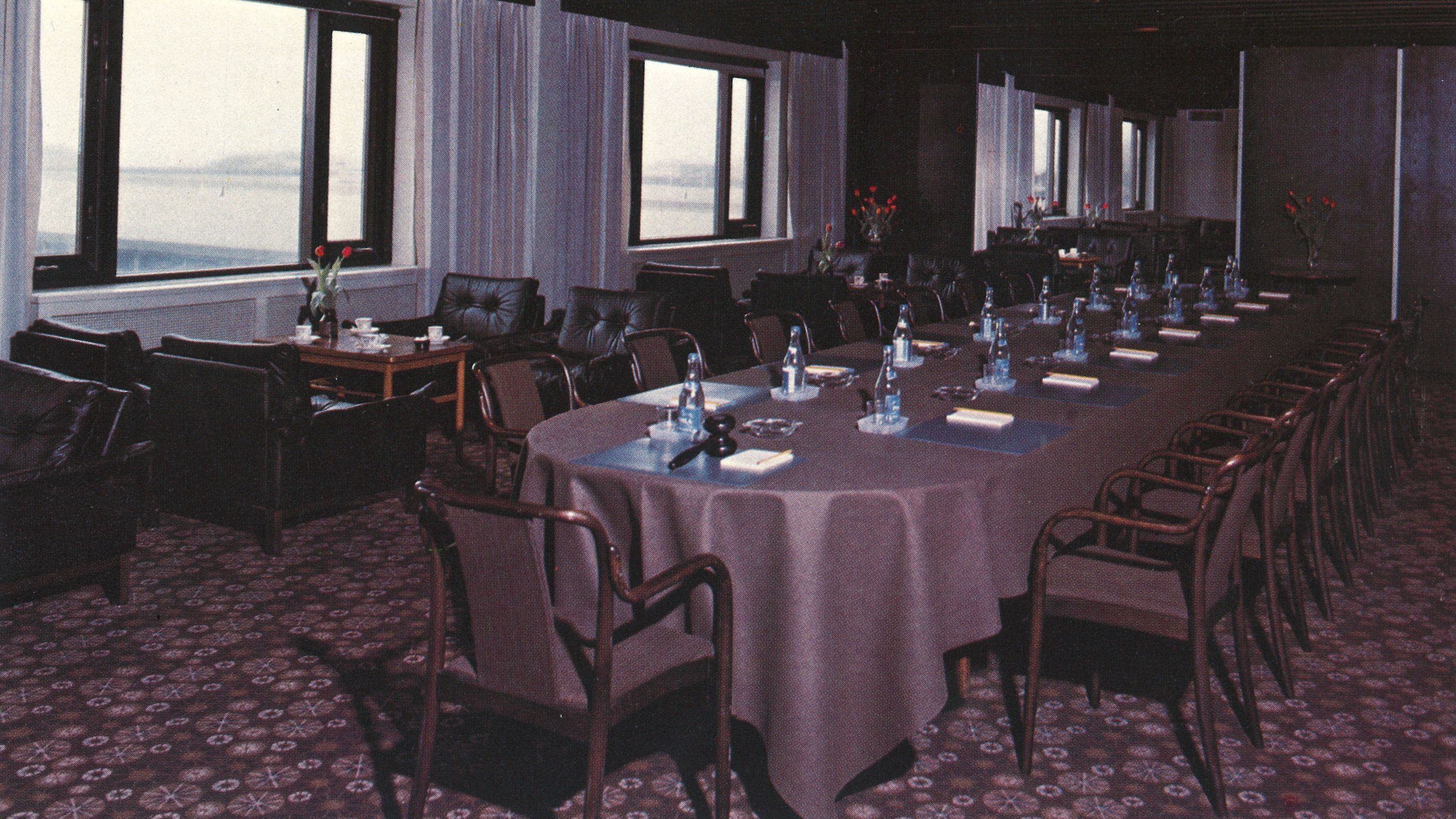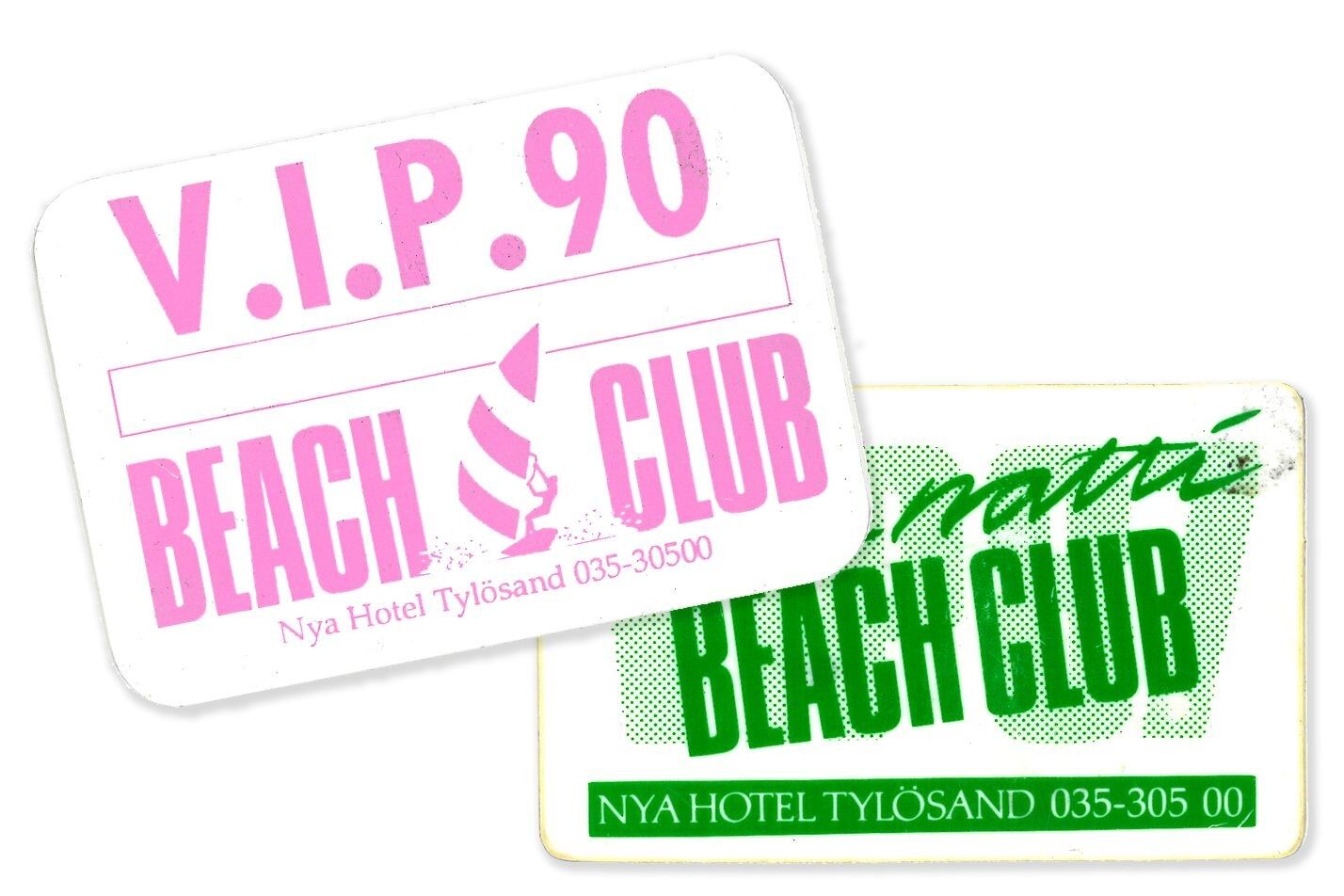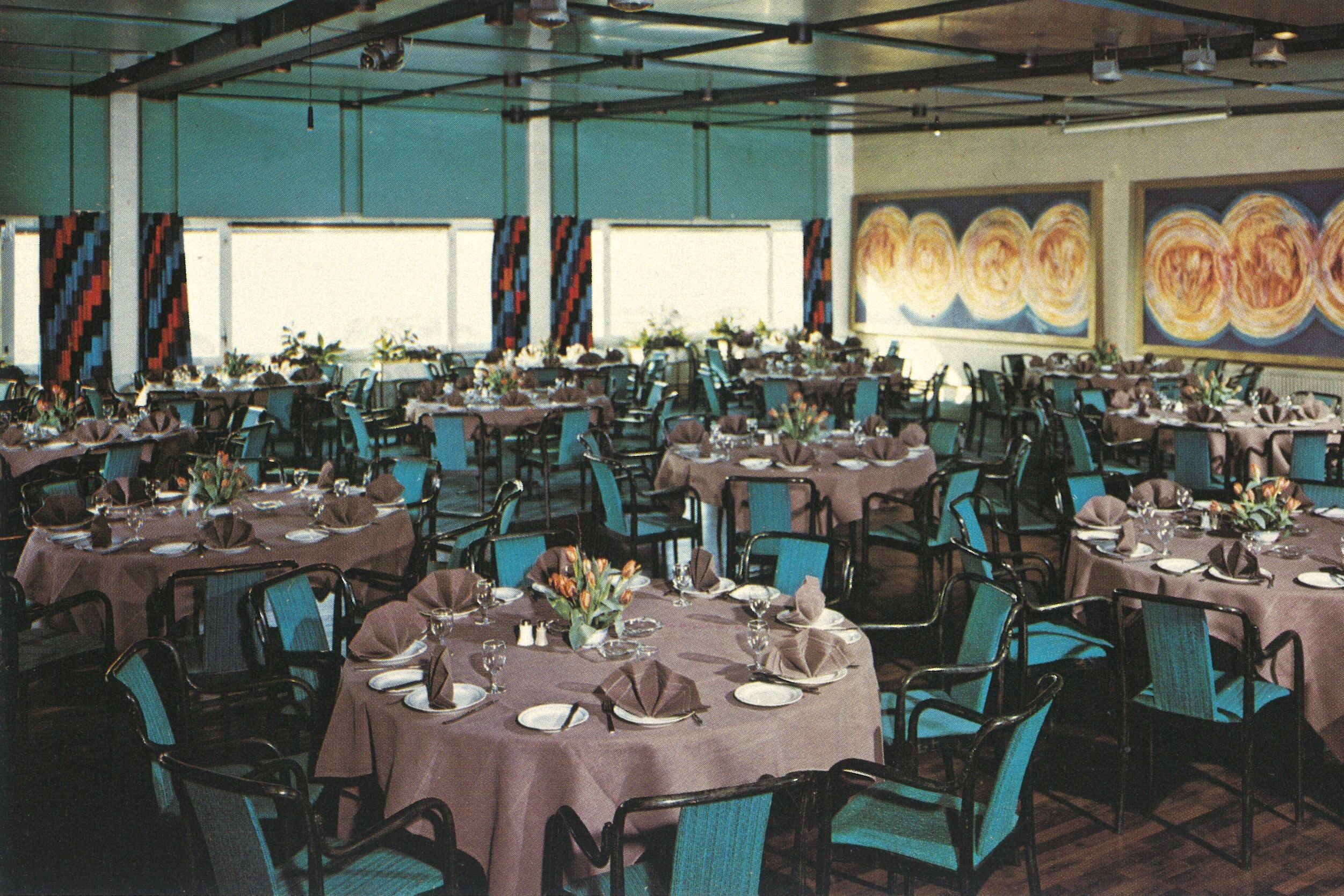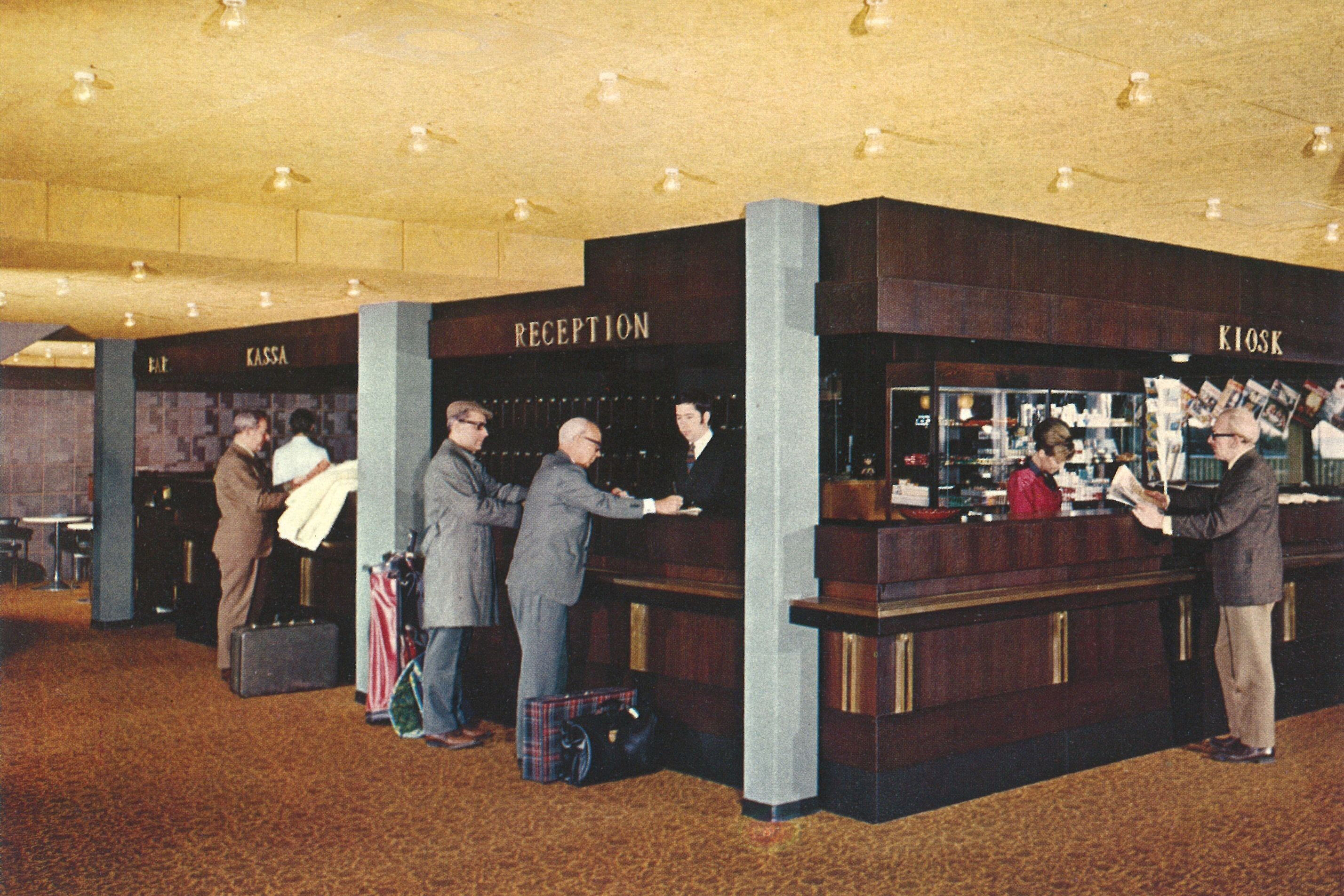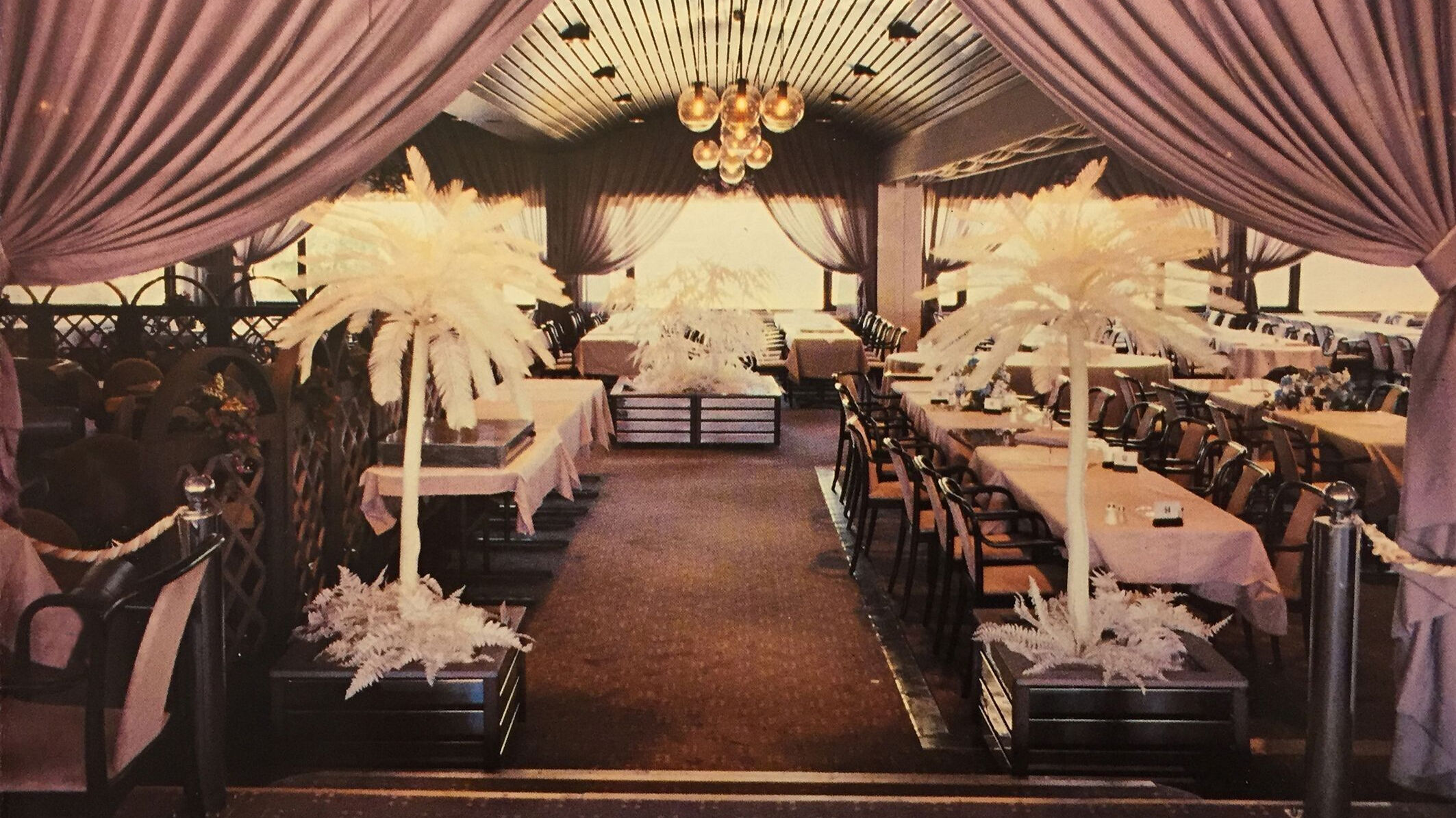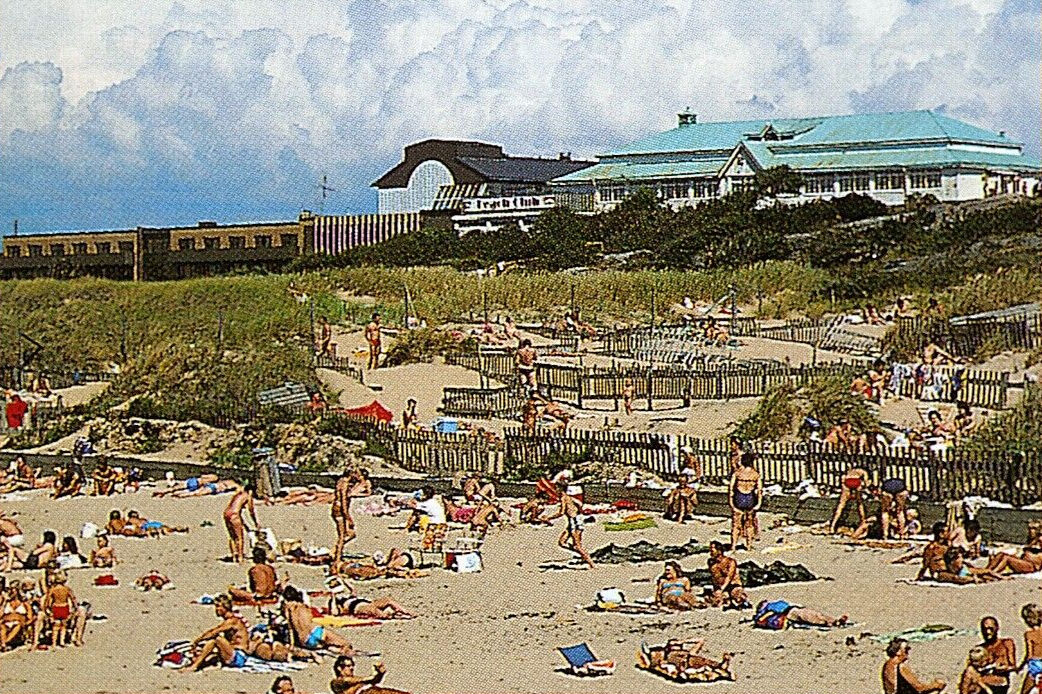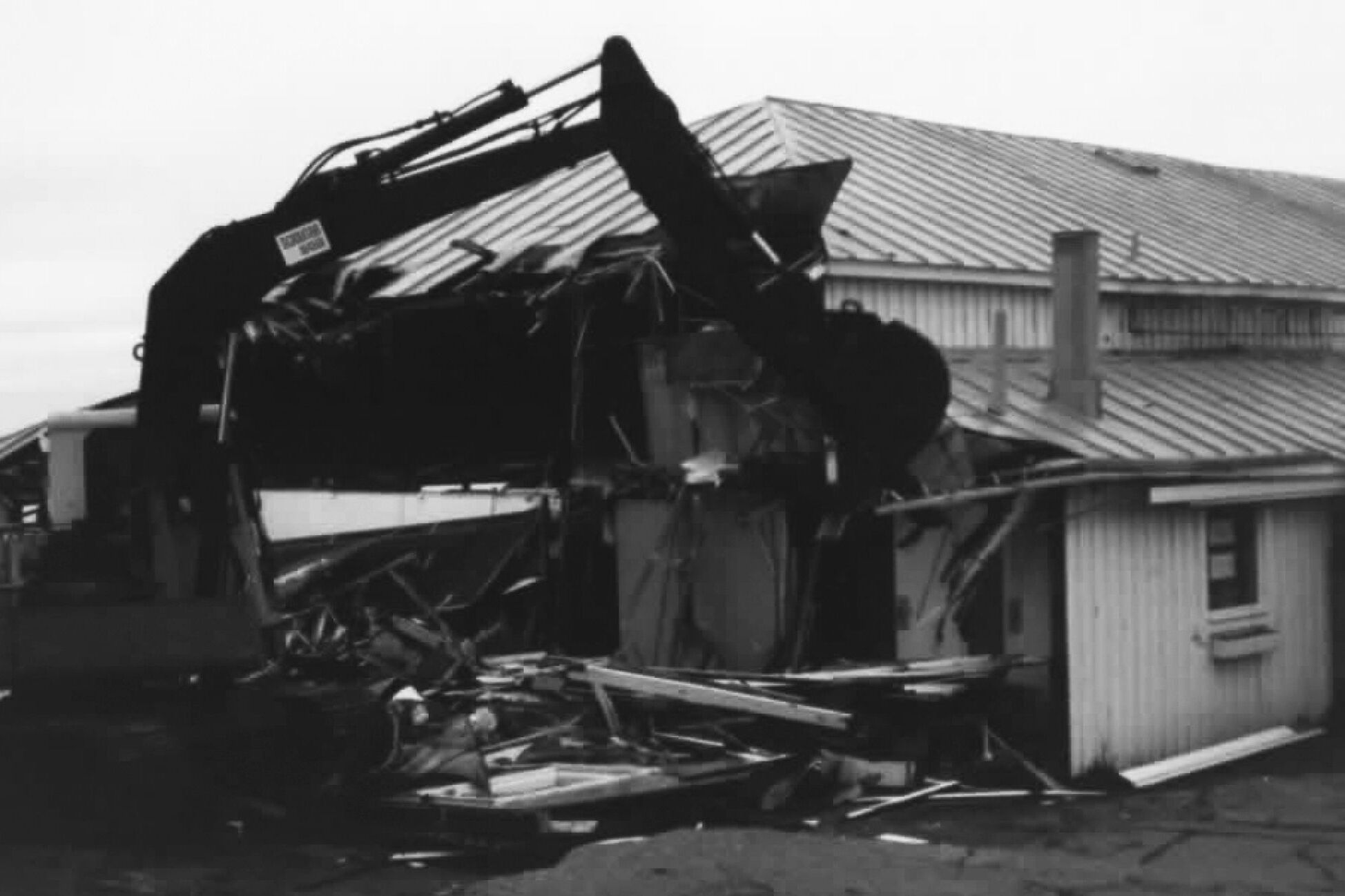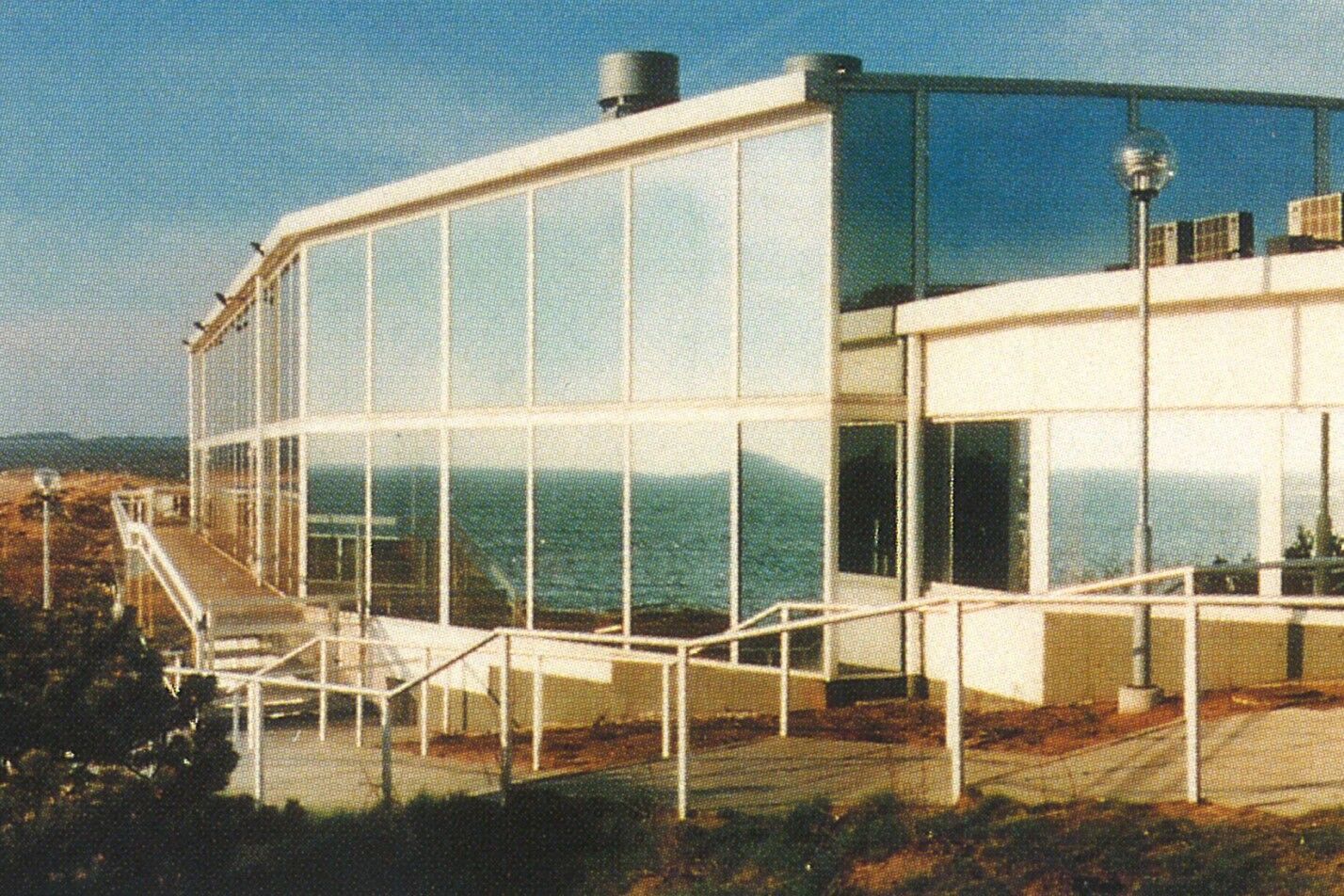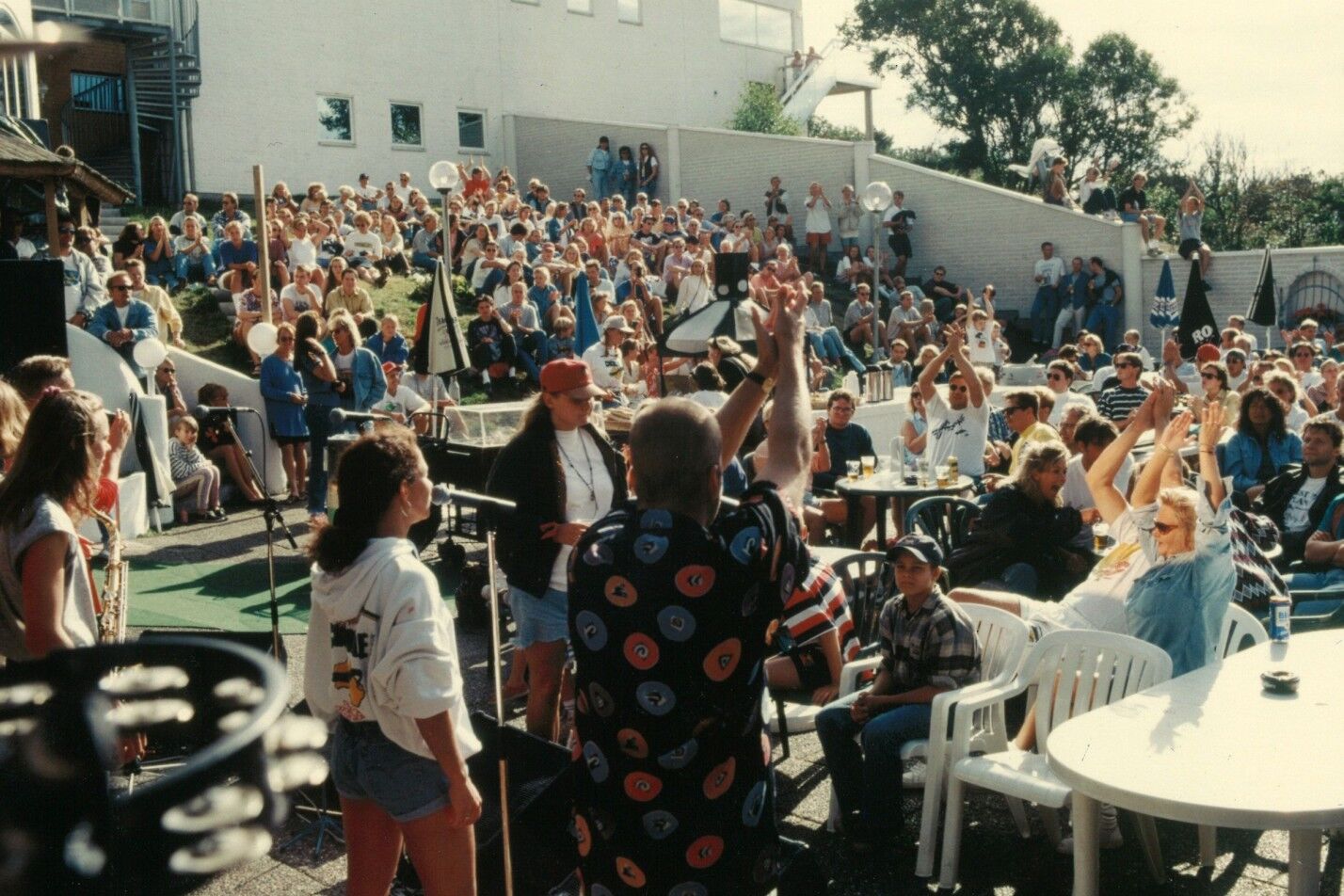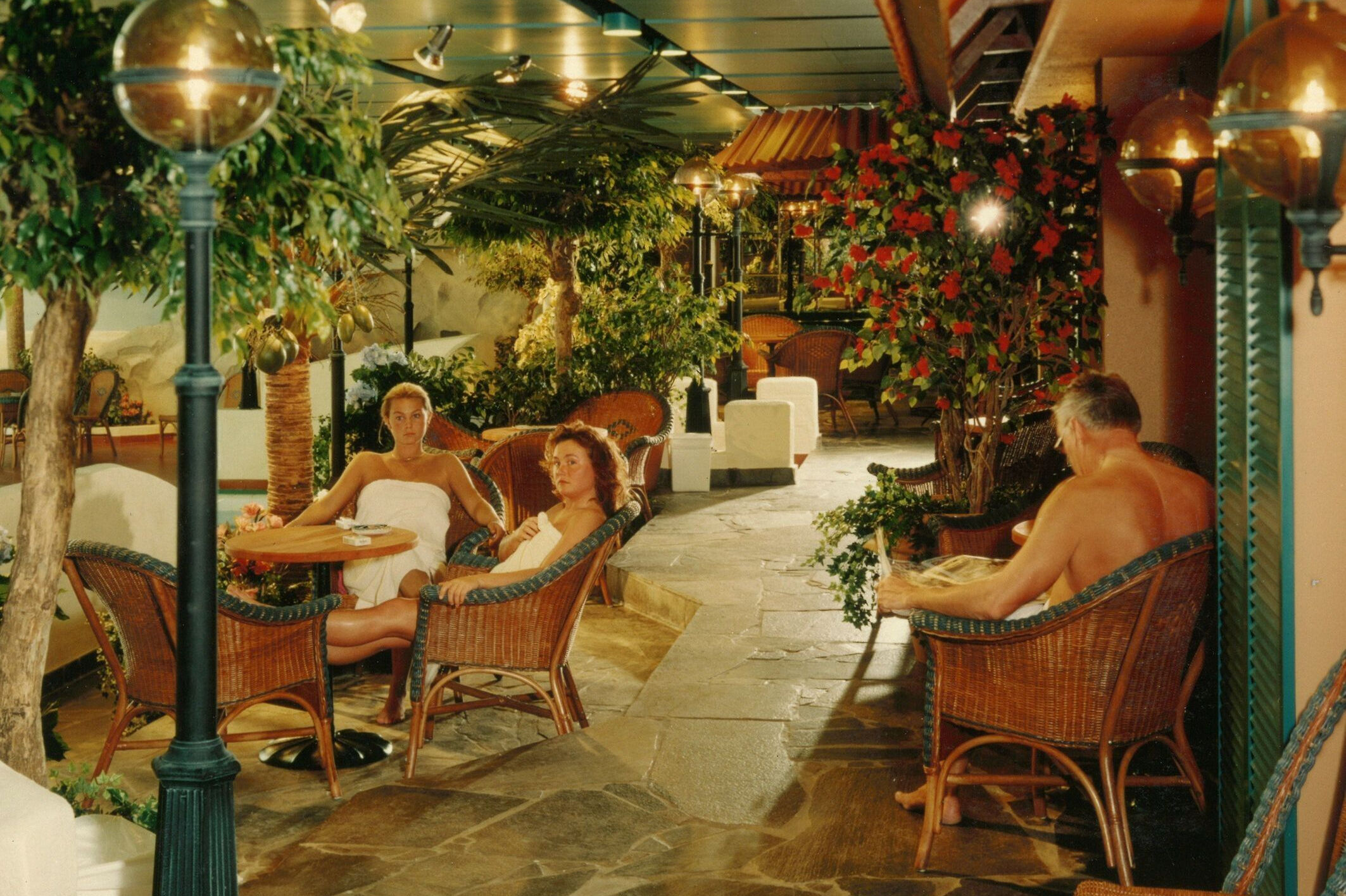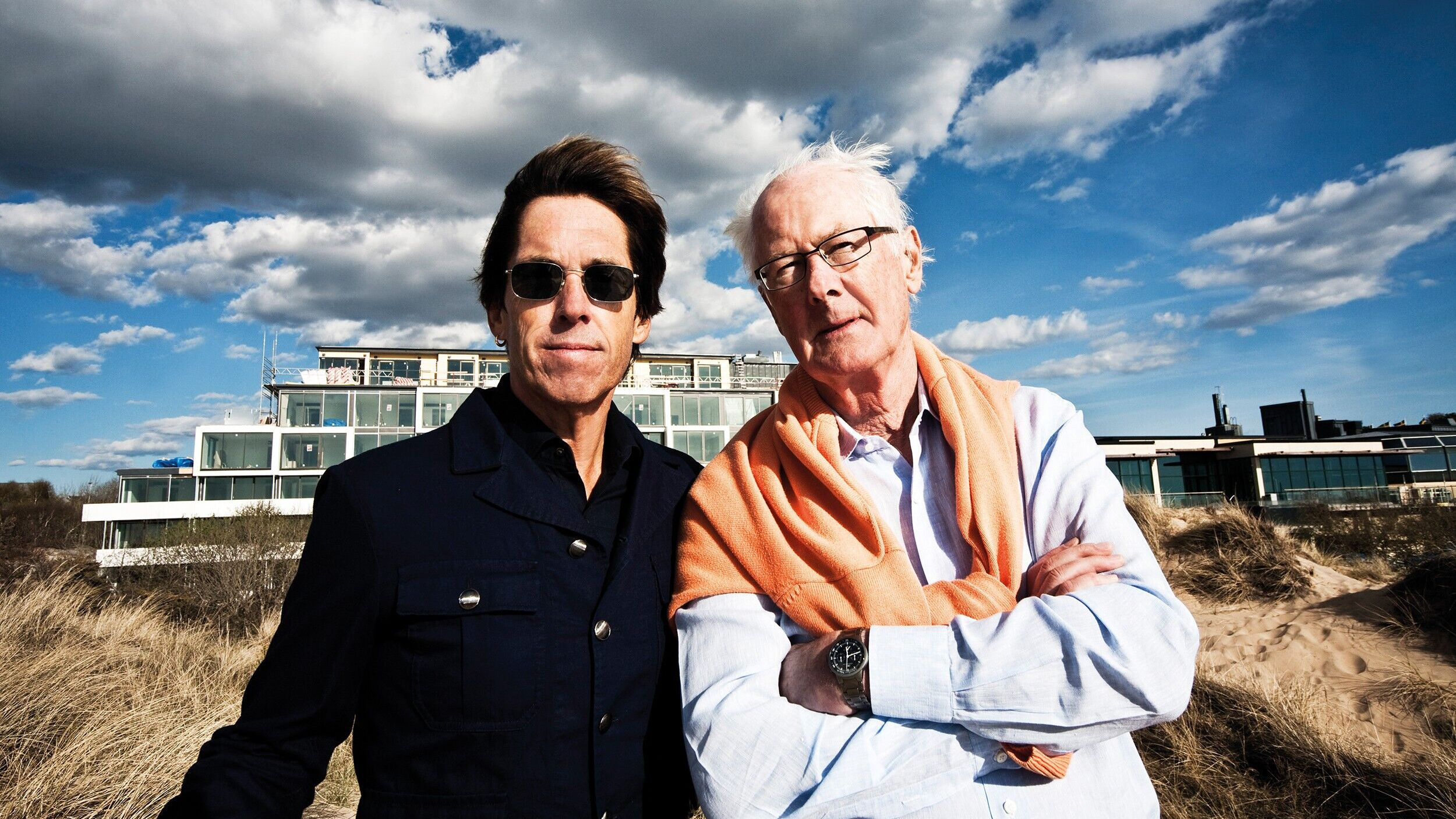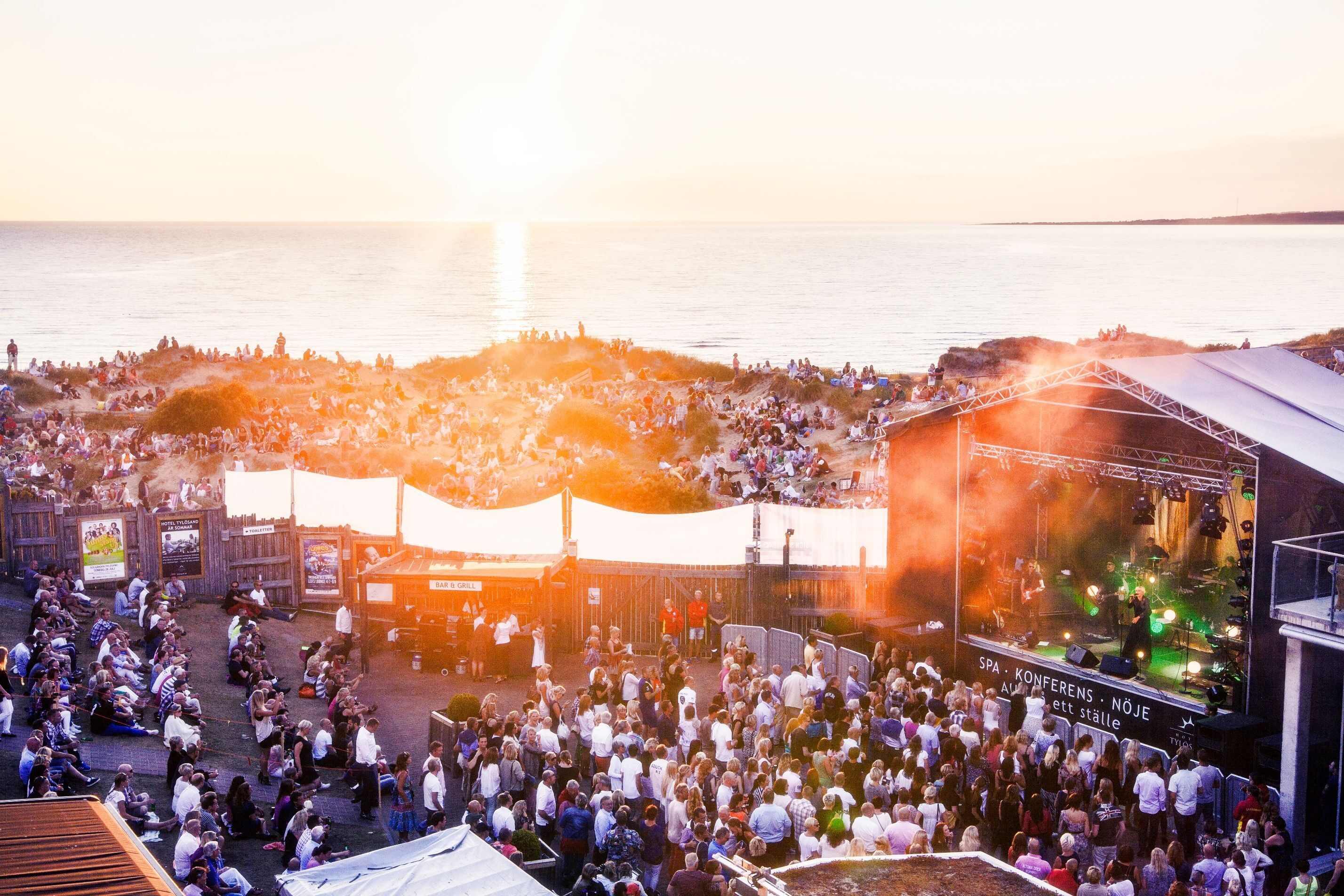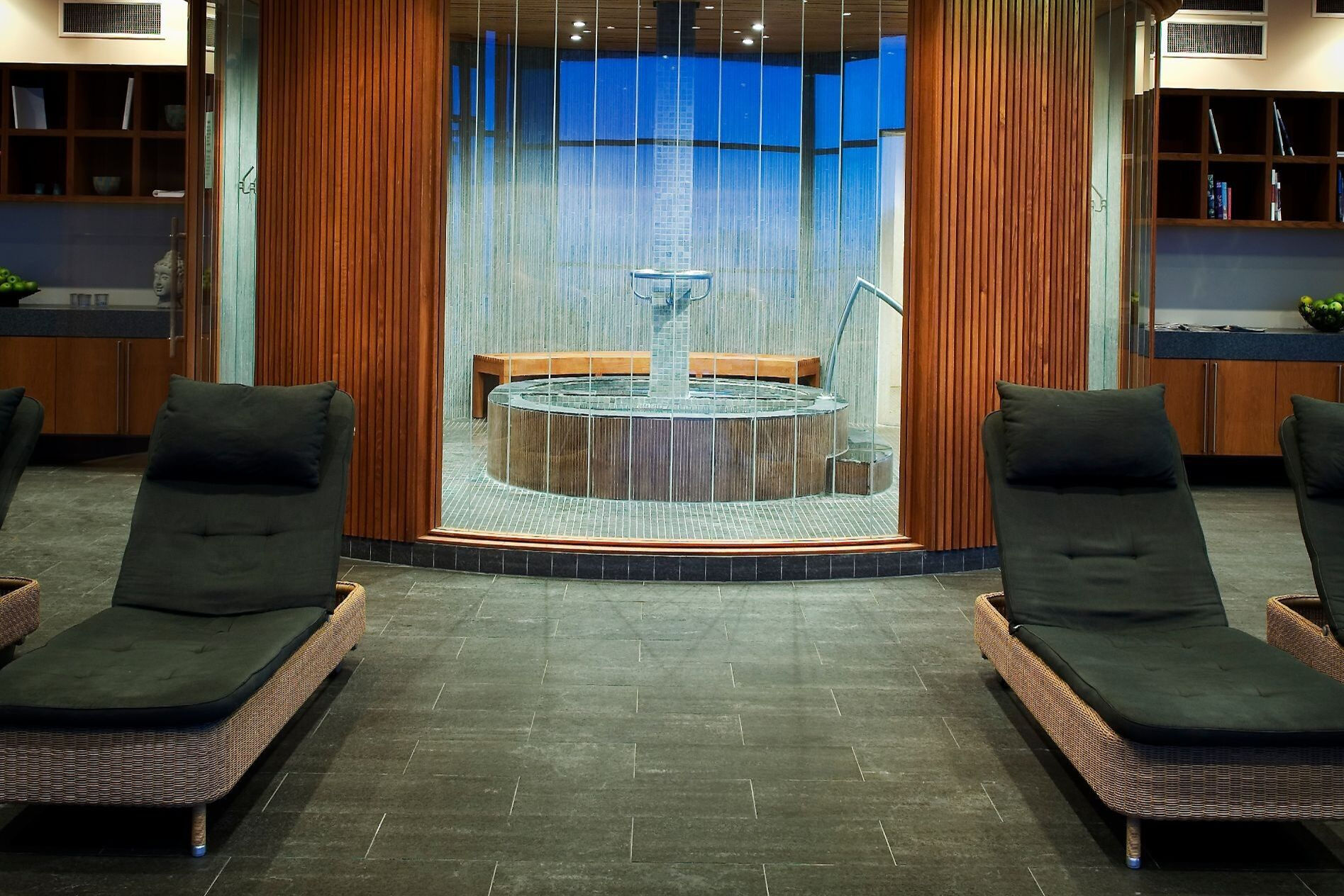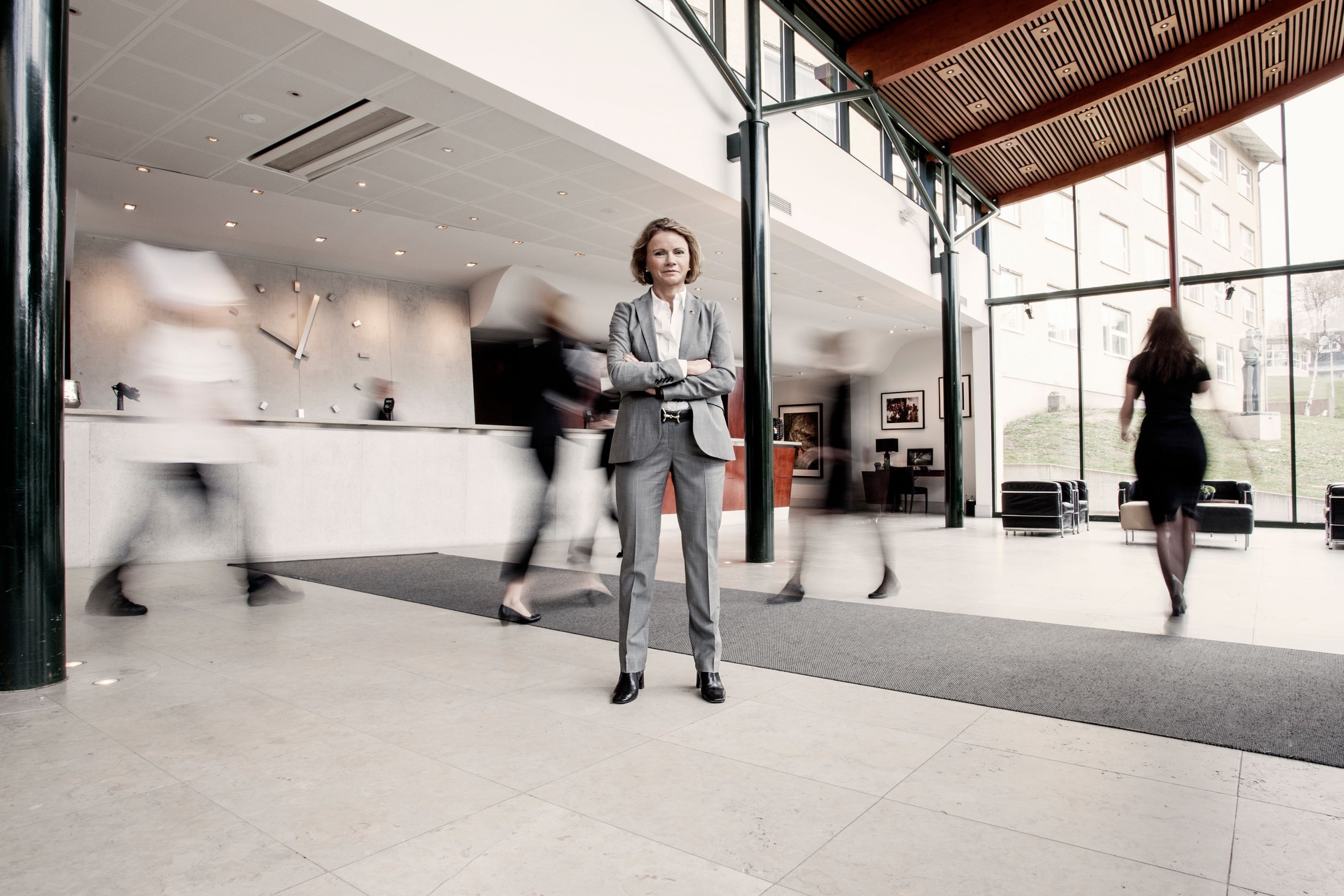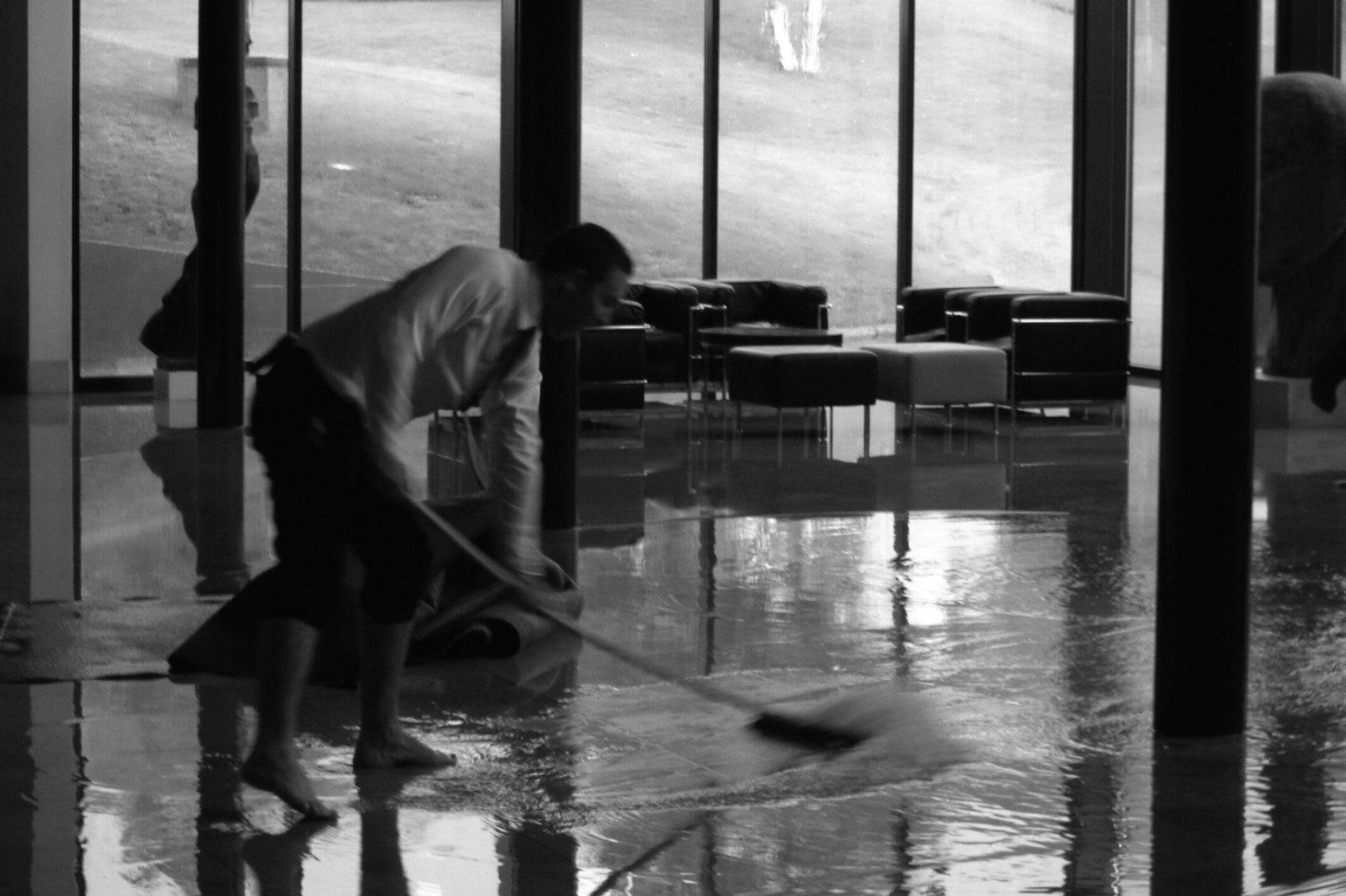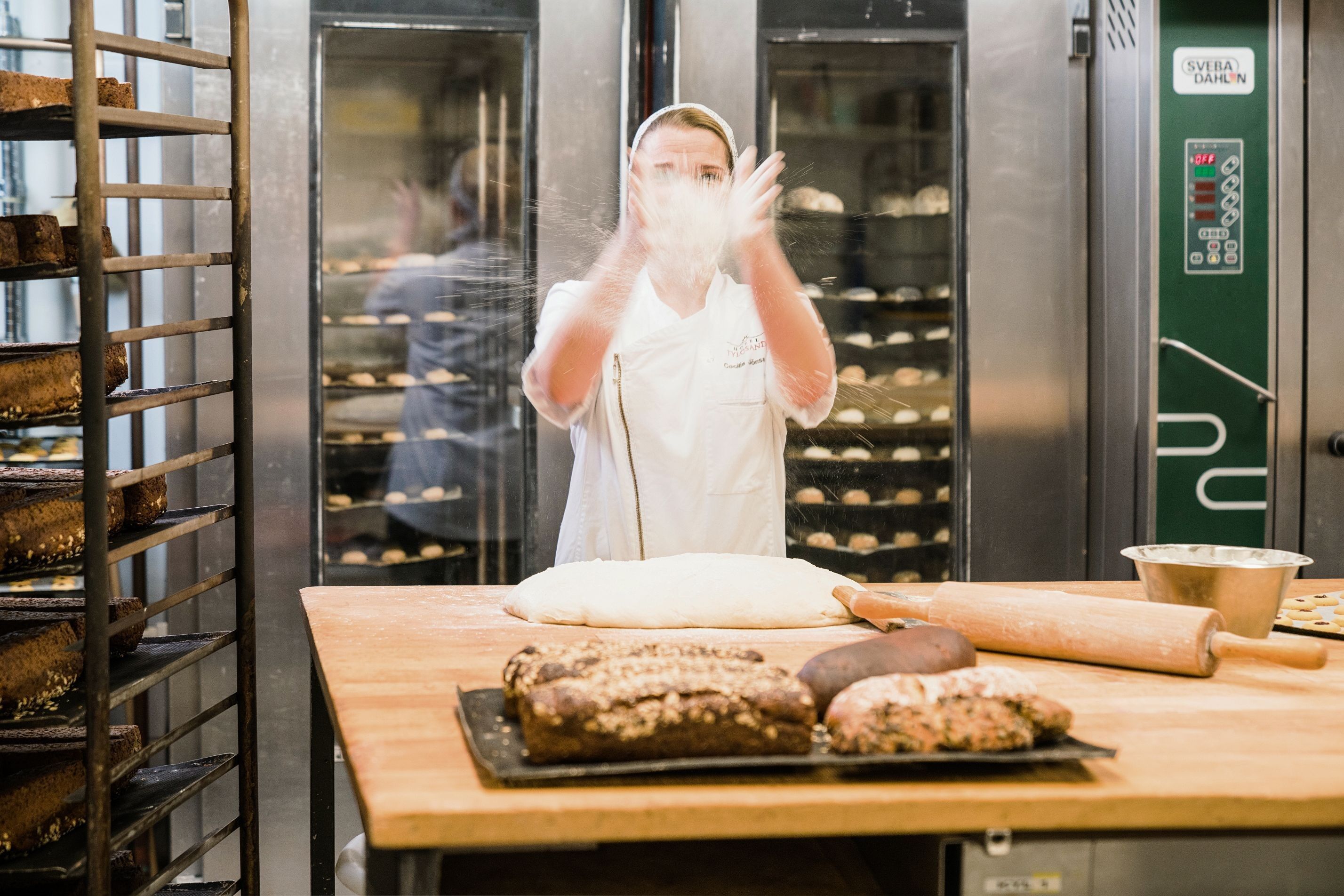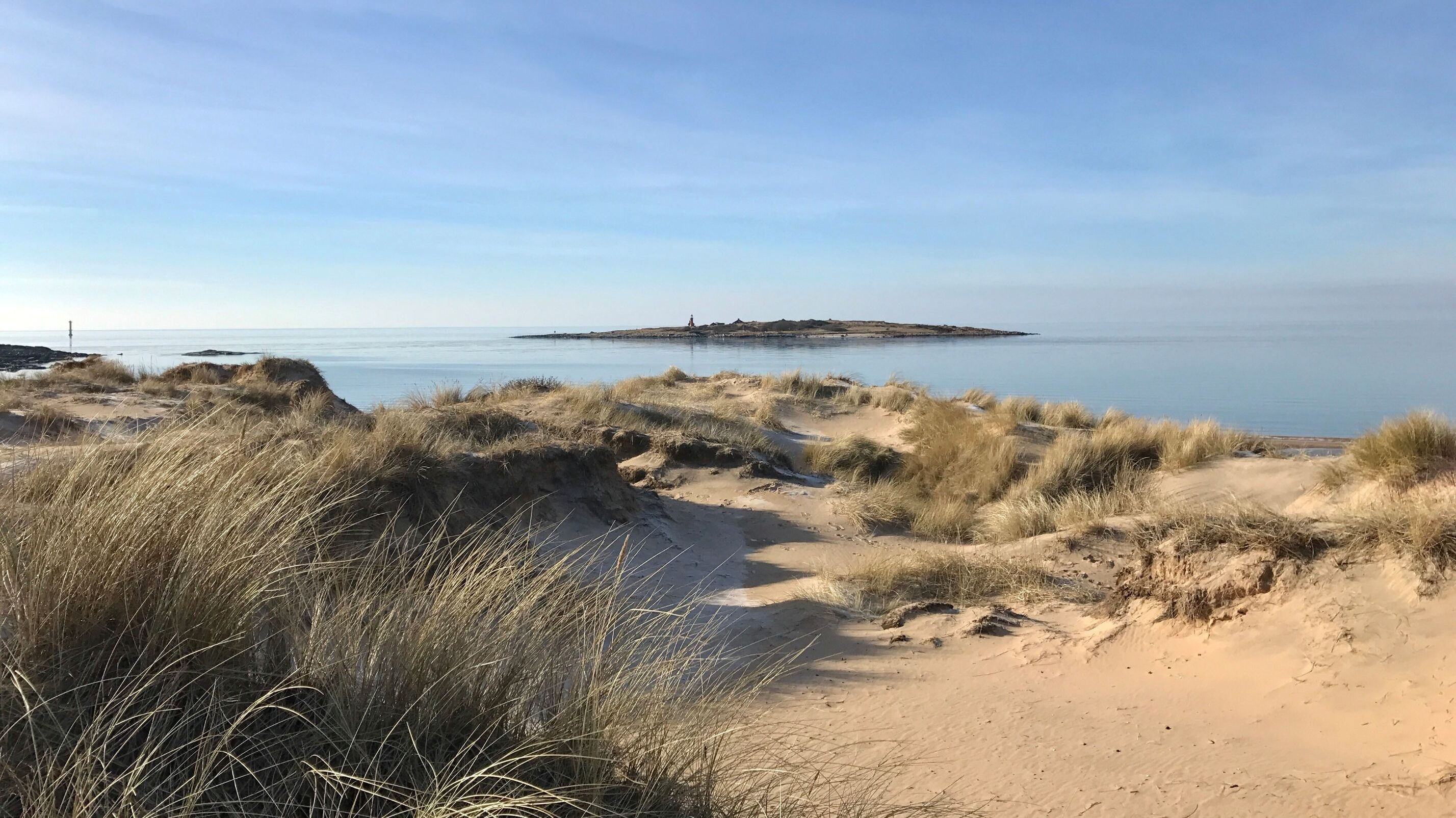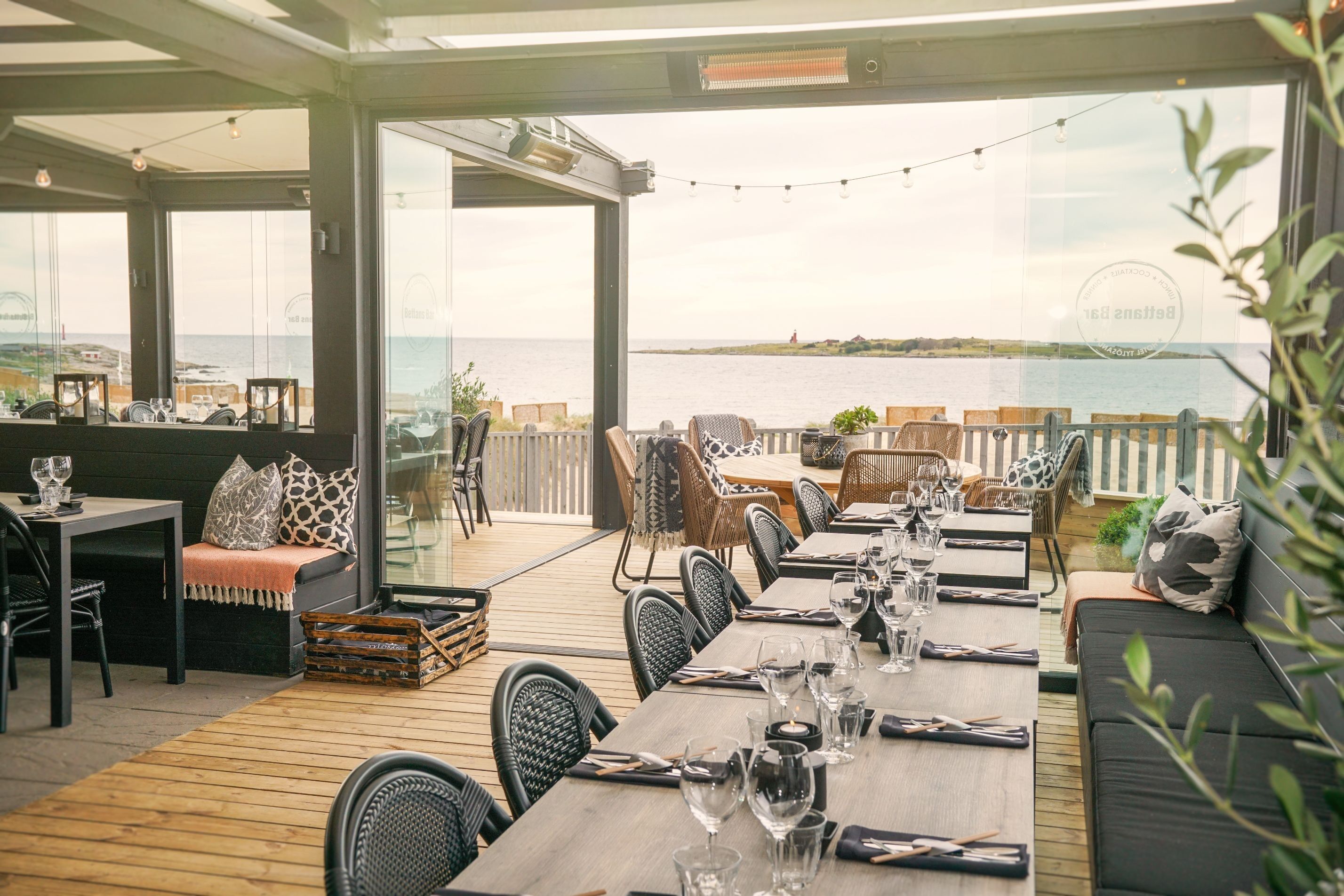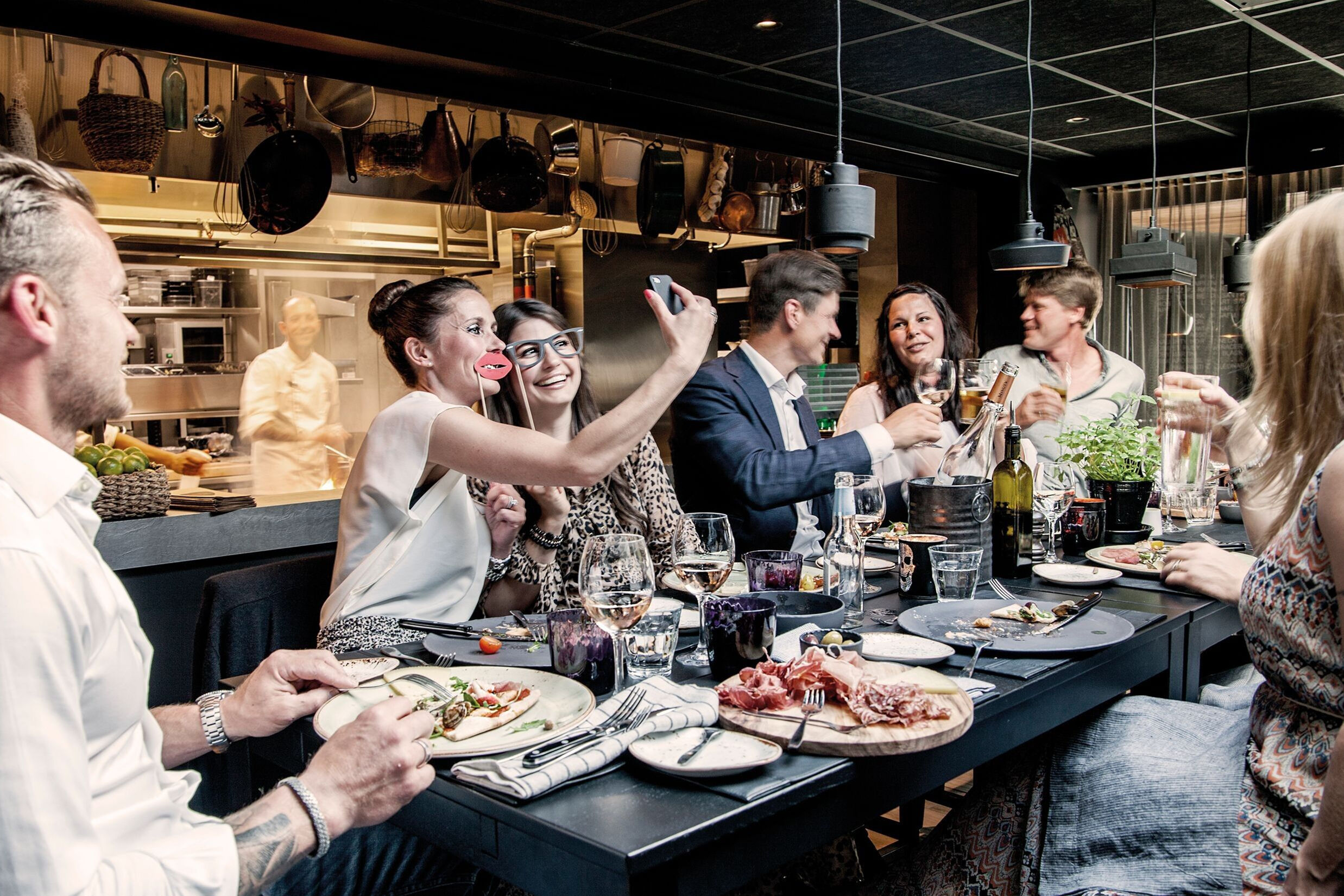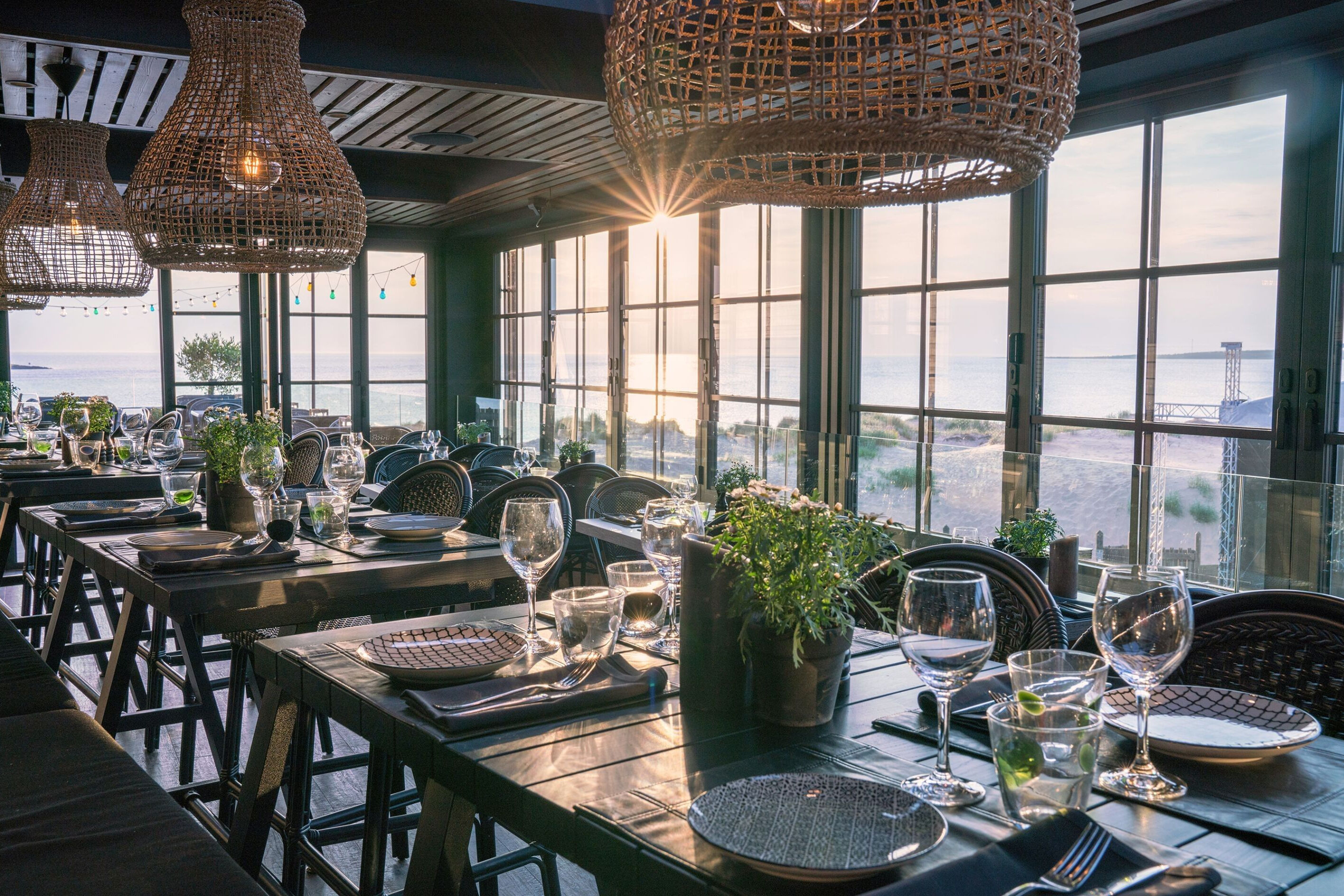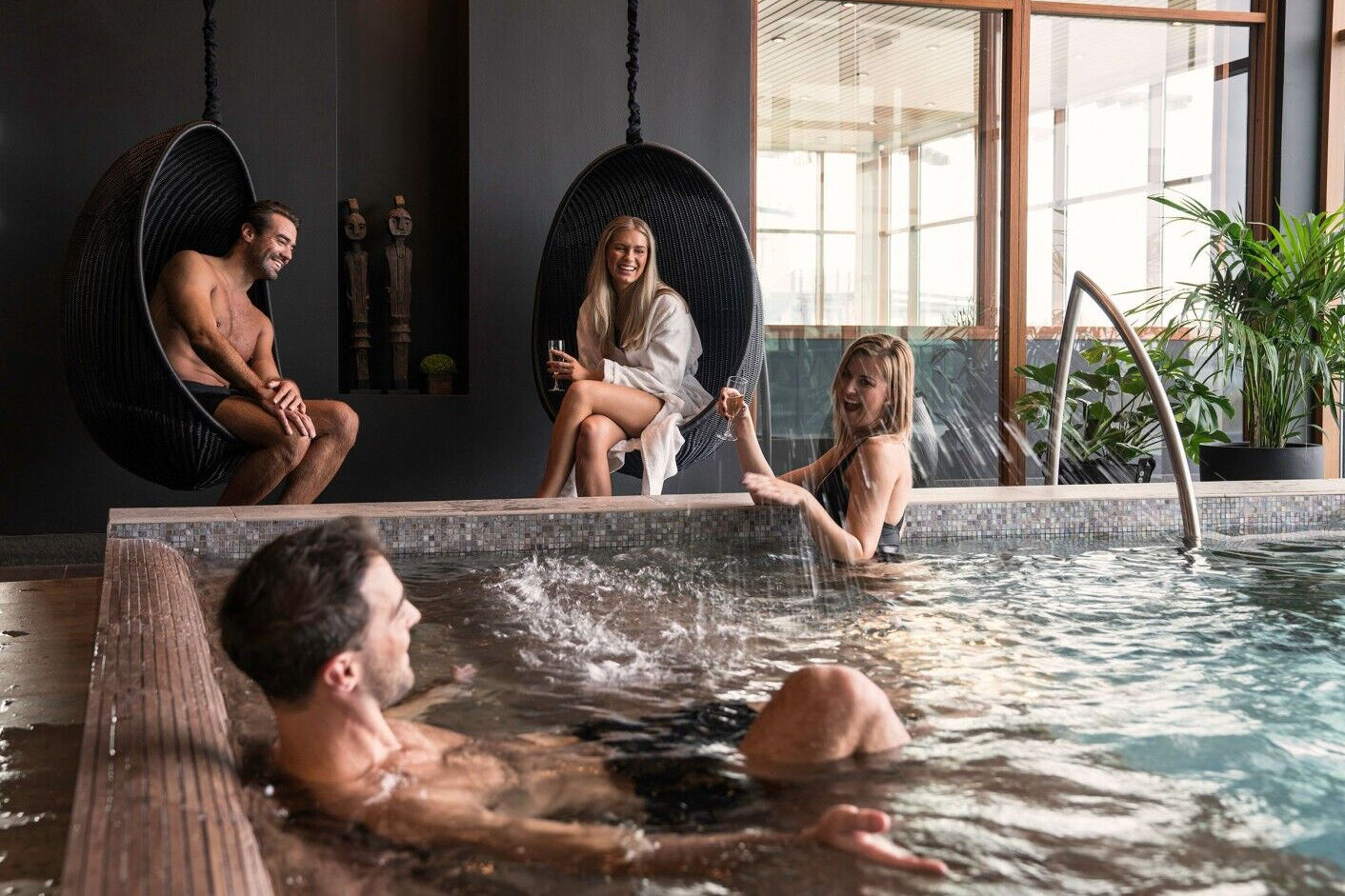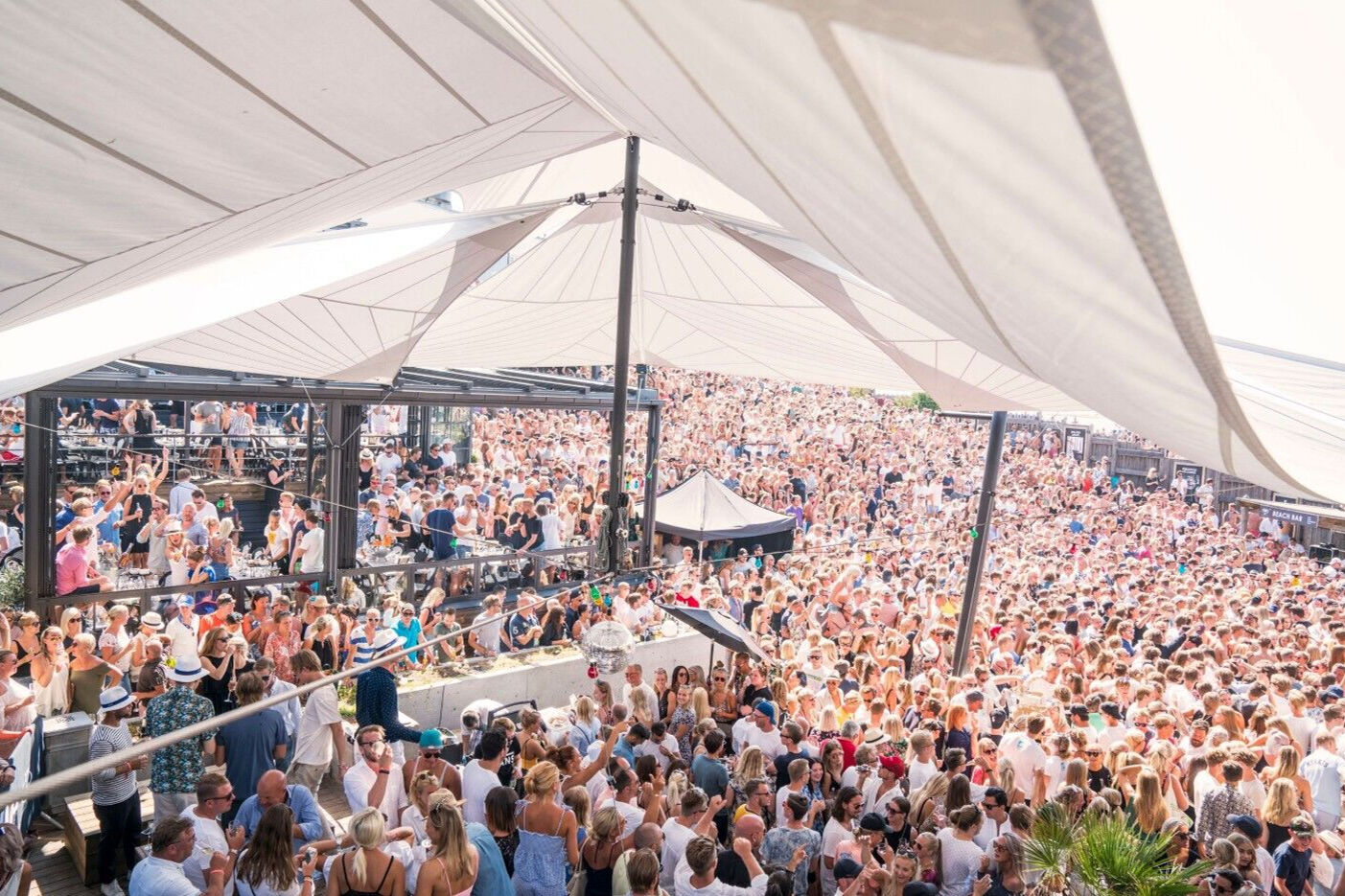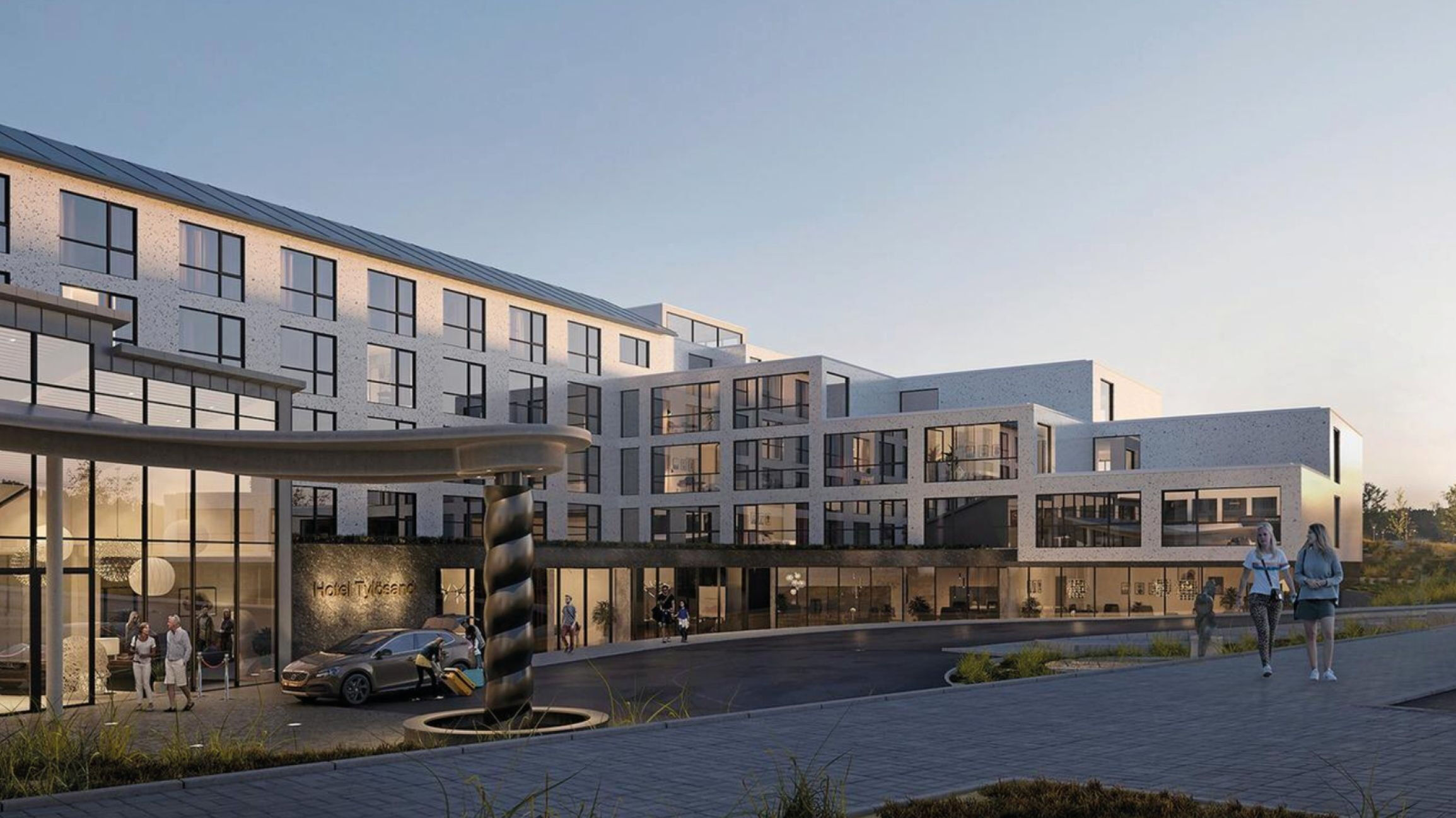FROM WASTELAND TO SUMMER PARADISE
During the second part of the 19th century it became fashionable to spend summer at a seaside resort where you could relax and enjoy beach life. In Halmstad a couple of leading persons initiated the idea that the town with its nice nearby beaches should be able to compete with more established seaside resorts.
The main question was where to establish a seaside hotel and restaurant. In September 1912 a delegation of gentlemen went out to Långenäsudden and Tjuvahålan to seek out a suitable location.
Shortly thereafter the local paper Hallandsposten with slight excitement reported that: ”The commissioned was especially delighted by an area on the west side of Tyludden, the so called Tylösand. Here you could surely be able to create a typical west coast seaside resort that could compare with – and surpass even – our foremost seaside resorts here on the west coast.”
But for that to happen, the communications between Halmstad and Tylösand must be sorted out. There’s talk about building either a road or a railway, but none of those plans are realised. Instead one decides to rely on the boat traffic that since the turn of the century has taken the few seaside enthusiasts out to the remote beach.
SMUGGLER'S NEST
Before all this, the place wasn’t especially glamourous. The area around Tyludden and Tylösand was difficult to reach and mostly frequented by fishers and smugglers – which explains the name Tjuvahålan (The thief’s hole). In 1870 The Customs authority built a customs station in Tjuvahålan to fight the smuggling, and the same year a lighthouse with living quarters was built on Tylön.
For hundreds of years the land around Tylösand had been seen as worthless – a big deserted area of sand without vegetation or settlement. The land was owned by the city of Halmstad, but situated in the village of Söndrum. Most people regarded the project as doomed.
But with the smuggling behind them, the growing summer tourism in view and French seaside resort Trouville in Normandie as a role model, photographer Johan Hallberg in 1915 builds Restaurang Tylösand; a beautiful but modest building with restaurant, porch and ten guest rooms.
THE SUCCESS BECOMES INCORPORATED
On August 31 1915 the hotel is officially inaugurated, and everyone who has shook their heads in disbelief at Hallberg’s plans will see their misgivings were unfounded. The timing is perfect; the new resort by the sea is a success, and already the year later three new rooms are added.
At the same time plans are made to incorporate the business. The process turns out to be slow, however. In April 1917 a constituent shareholder’s meeting is held, but it’s not until March 5 1920 that AB Tylösands Havsbad is registered at the Royal agency for Patents and Registration. 100 years of love by the sea can start.

 Svenska
Svenska






